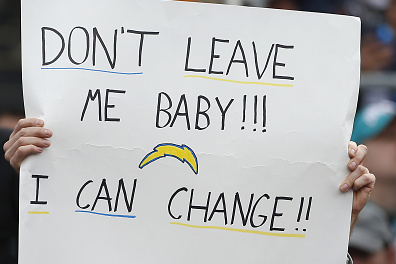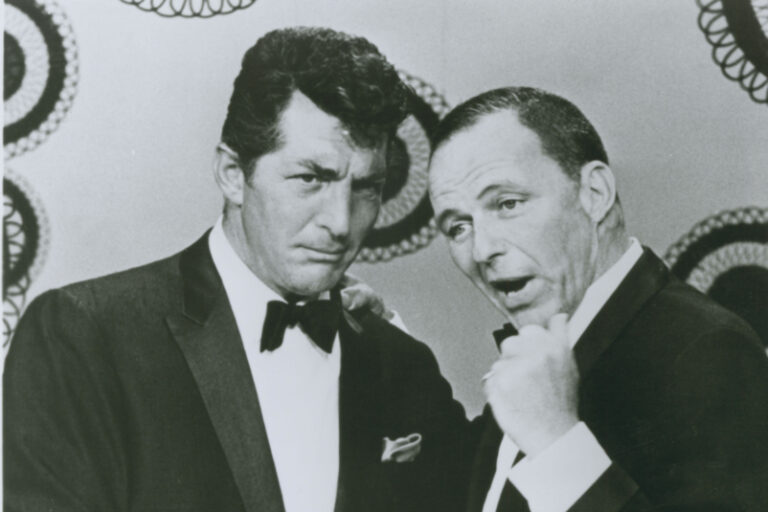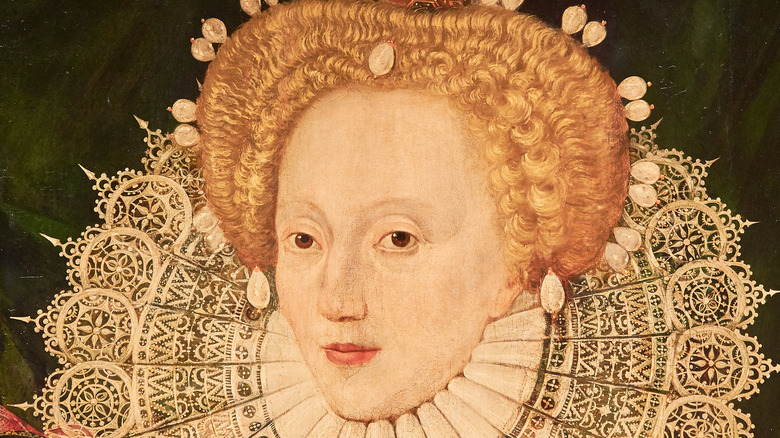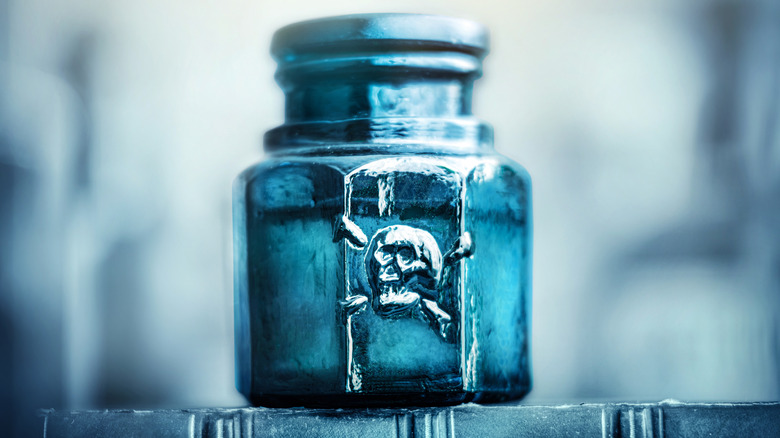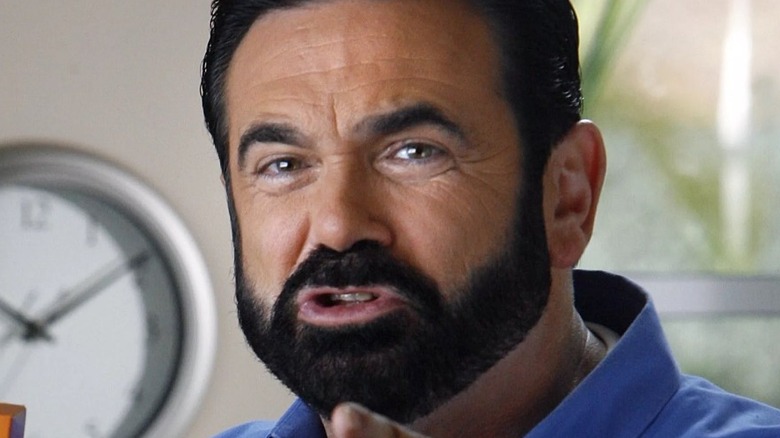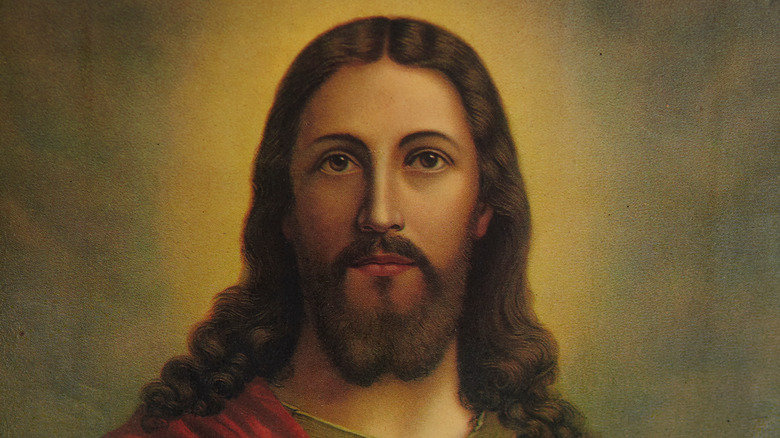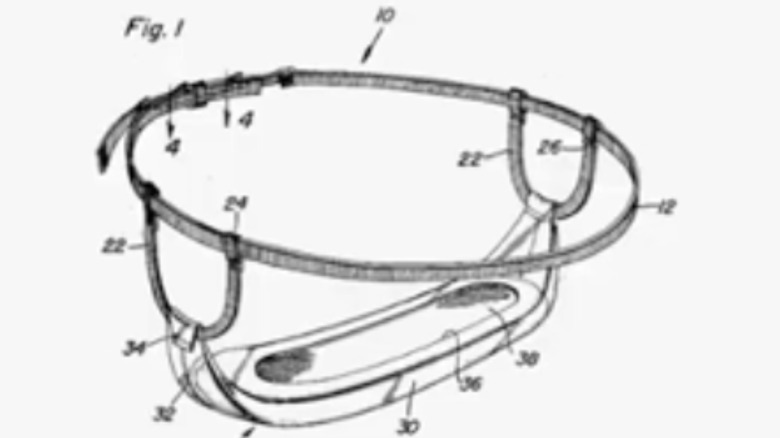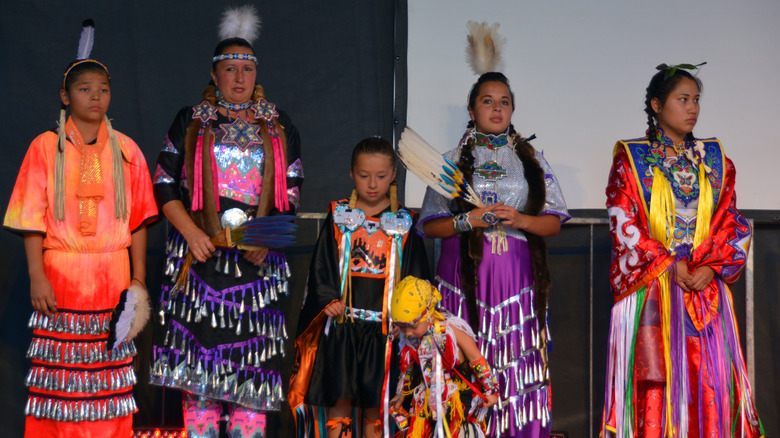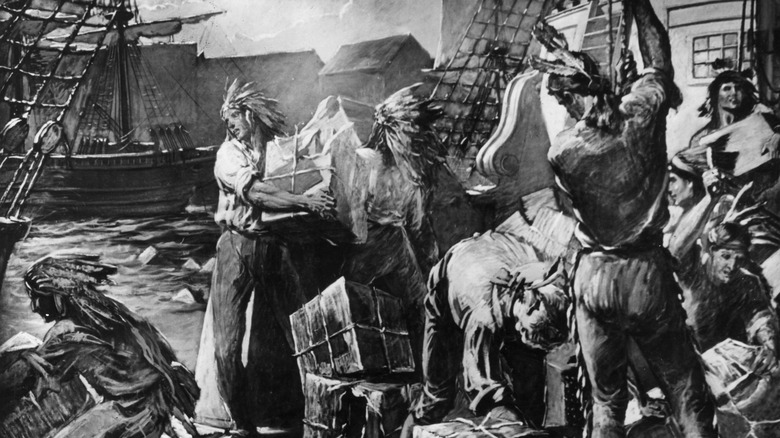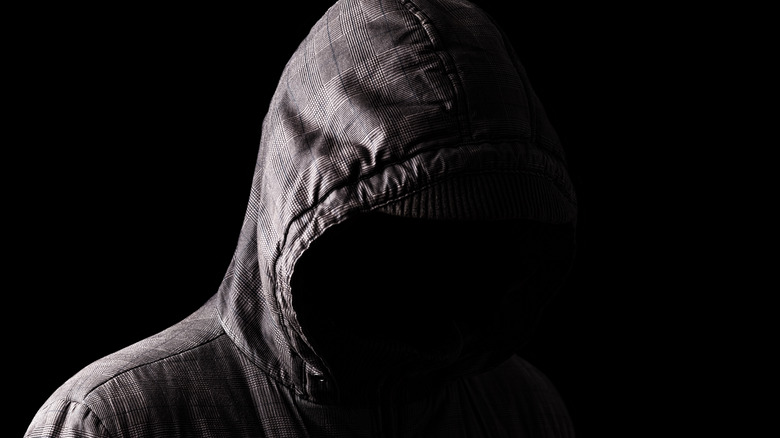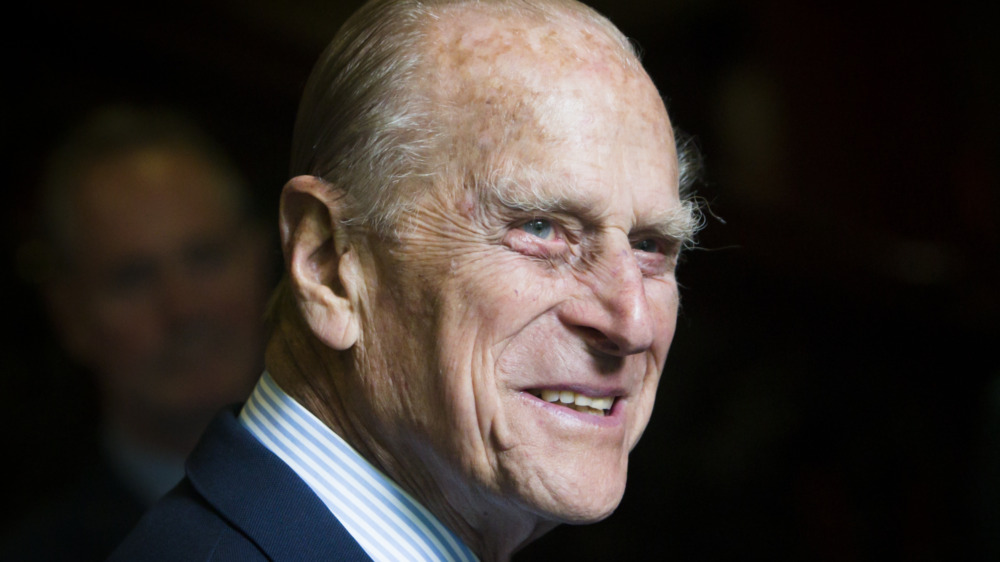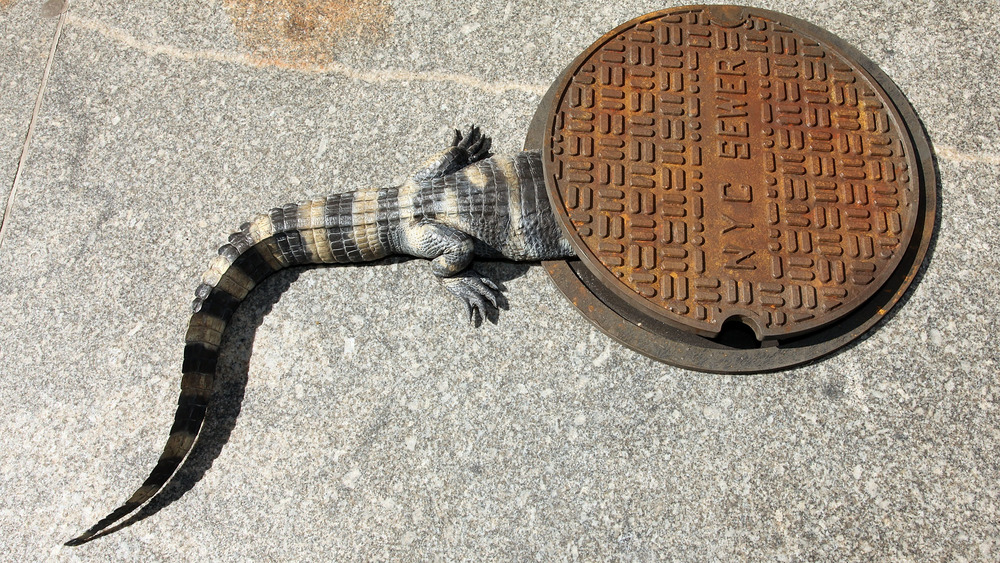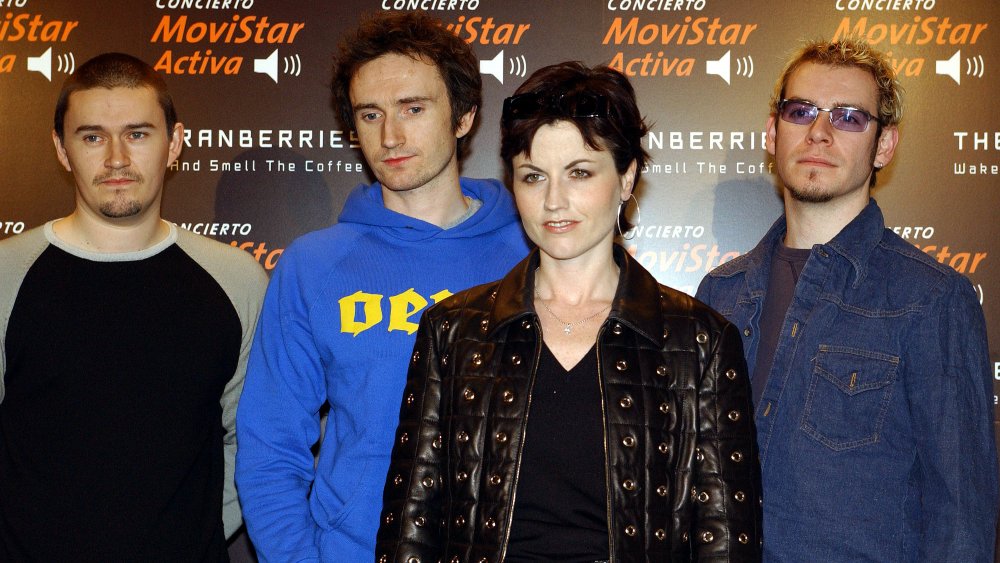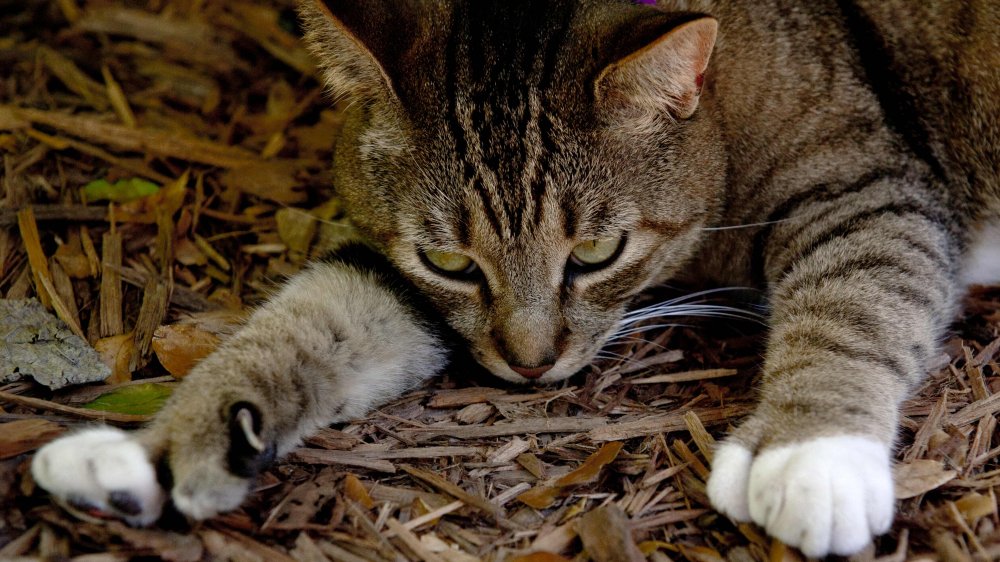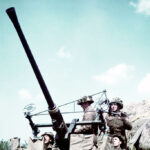
A Rare Photo Timeline Of D-Day: The Beginning Of The End Of World War II
The devastation of this great war left around eighty million people dead in its wake, traces of civilization burned down on an epic scale, infrastructure and homes leveled. Those who escaped its atrocities and did not die weren’t necessarily lucky either, for no one really wins in war, especially not ones of this magnitude. They would re-live its consequences on a daily basis, dark corners of their minds haunted, some for the rest of their lives. It’s hard to erase the memories of having witnessed family and friends torn to pieces, mangled by mortar explosions, their bodies splattered all over with mud, smoking, blasted away, unrecognizable in bomb raids, bodies riddled with raining bullets.
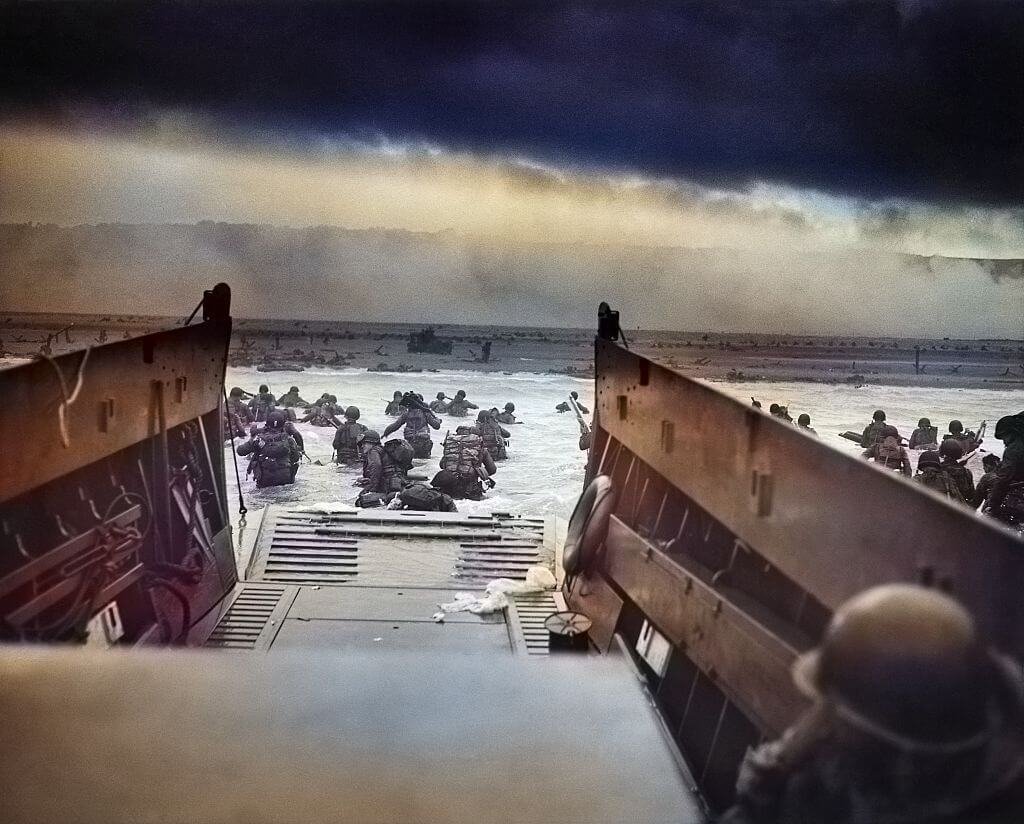
World War II was the deadliest conflict in human history. Take a short journey with us in pictures. Take a glimpse of D-Day in color, the Battle of Normandy, the preparations these brave men, now forever scarred, went through, during the pivotal and horrific battles of the war to end all wars.
Heading Towards The Ships
Happy and jubilant, too eager for action, these American soldiers march toward their assigned ships in Weymouth, Dorset, in England. They are set to land at Omaha Beach for the big one: the launching of the D-Day invasion. Many of them are just boys with no idea yet of what war really means.
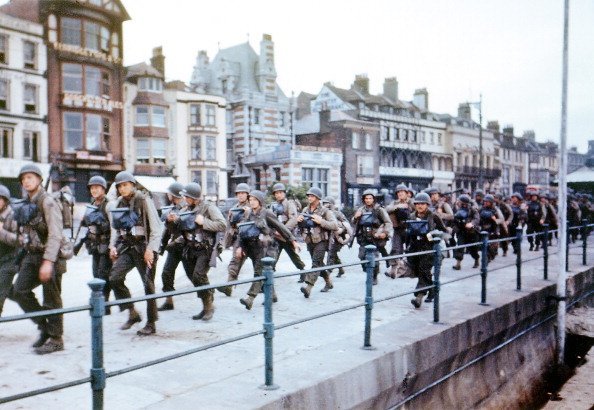
Sadly, some of them would not even make it to the Omaha landing objective, let alone D-Day itself. They were noobs in the war, with very little organization. Poor planning would fail them, as many would land in wrong spots. The challenges in navigation would cripple that force’s ability to strike hard at the enemy, and losses were astronomical, way before the battle had even started. When it did kick off, they were lacking in number, downtrodden, the challenges seemingly insurmountable to them.
Loading All the Necessities For The Attack
With a war that involved more than a hundred million people from over thirty countries, these soldiers were shipped in full force. They were trained to prepare for the worst, and rightfully so.
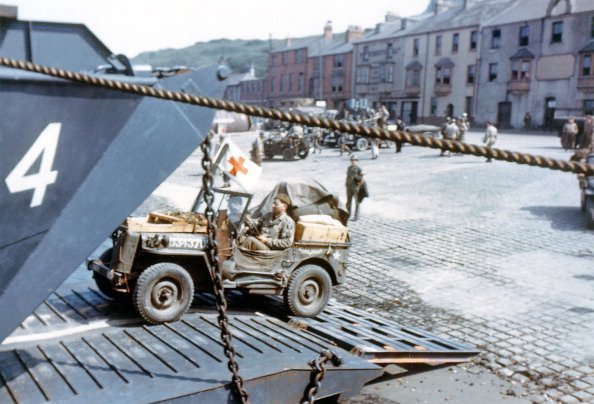
Loaded in this Landing Craft Vehicle, just one of so many that were deployed, are the tools and equipment of the armed forces. Firearms, medical supplies, explosives, heavy machine guns. This photo was taken on June 1st, in Southern England, as a US Army ambulance wheels in. M4 Tractors, Armored Reconnaissance Vehicles, Harley-Davidson WLAs, Heavy Transport Vehicles, Infantry Fighting Vehicles, Jeeps, and more, were also part of its vital cargo.
An Explosive Meal
This photo shows a young American soldier taking a short break from work. Millions like him would find themselves laying their meals on ammunition stockpiles to eat, mostly in a buddy-system, talking about what’s to come in the days ahead. In the army, one has to adapt to every situation or be left behind.
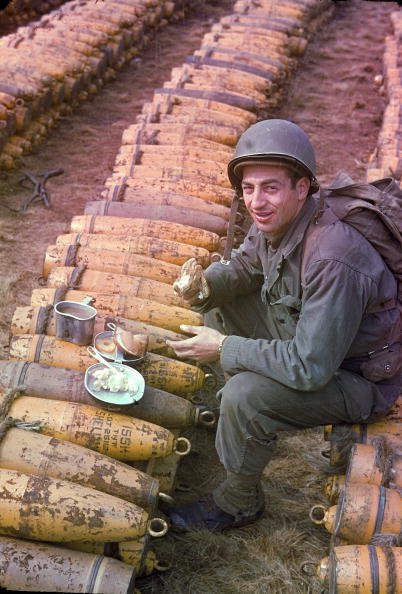
Their cargoes were massive, mostly covering for the infantry divisions that would storm the defensive beaches. They moved 188,000 automatic rifles, 1.5 million crew-served machine guns, 2.3 million submachine guns, 2.8 million revolvers and pistols, and a whopping 11.6 million carbines and rifles. They would take whatever was necessary to overrun the enemy’s defenses. Imagine all that load, and not to mention close to 60 billion rounds of small arms ammunition.
Waiting For The Go-Ahead
It took some time to complete their first objective of loading all their equipment into Landing Ship Tanks. Once they were through, the waiting game would begin. Here, a group of American soldiers await their orders to begin the massive invasion across the English Channel, on June 5, 1944.
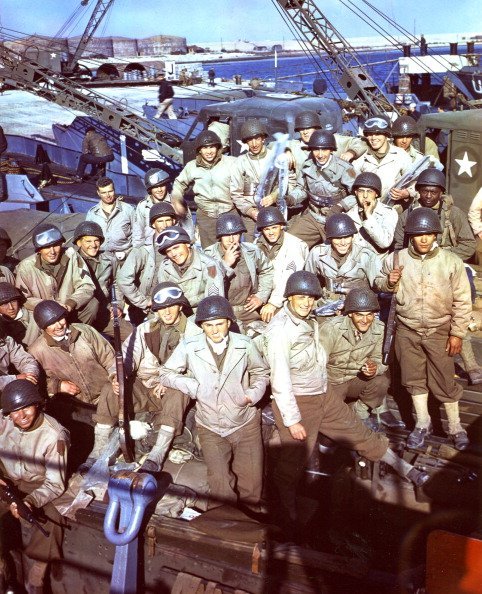
They look full of life, bursting with energy and conversing about the war. It was supposed to begin on June 4th, however, the top dogs decided to move it due to bad weather. They would not take a risk after all the work they’d done, and eventually the order would be announced on June 5th to deploy 156,000 soldiers across the English Channel. The actual battles started on the morning of June 6th.
Ready To Fight
It was difficult to size up just how strong particular enemy defenses were. The lack of high-tech equipment at the time was compensated for with military strategies designed to lure the enemy into making mistakes in positioning before battles started. Gen. Eisenhower, commander of D-Day Operation Overlord, made it look like the Allied Forces were coming in through the Pas-de-Calais, the narrowest point between England and France.
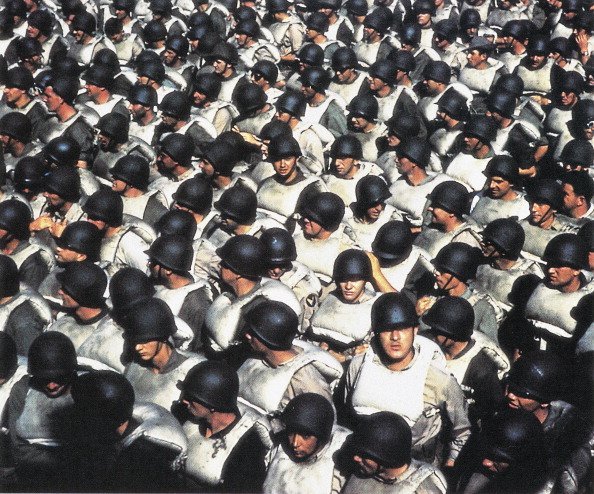
He misled the Germans with the use of fake equipment, posturing a ghost army close to the narrow pass, and sending fake radio transmissions. Meanwhile, this photograph shows US soldiers fitted with life vests while on their way to the French Coast. They were ready for war, and their success was highly dependent on the covertness of the operation.
Getting Ready To Engage
Allied troops came in enormous proportions to overpower enemy defenses nestled in the beaches of Normandy. Platoons of soldiers were relayed from smaller landing crafts to larger ones, a sequence that would give them better cover as they stormed onto the beach by the thousands.

It would seem like a suicide mission, but luckily, paratroopers would distract defenses by attacking them from behind enemy lines. These special forces would glide down covertly and confuse the enemy, securing bridges, and exit roads for the amphibious invasion. All in all, around 10,000 soldiers lost their lives in their first major attack; a price they would pay to successfully overrun the beaches of Normandy.
Reminiscing in Normandy
The Allied victory at the beaches of Normandy was a major turning point in the Second World War. The outcome of the operation resulted in the beaches being secured, and this is where they would roll out the troops with 50,000 vehicles, and more than 100,000 tons of equipment. They now had a major geographical advantage against the enemy.
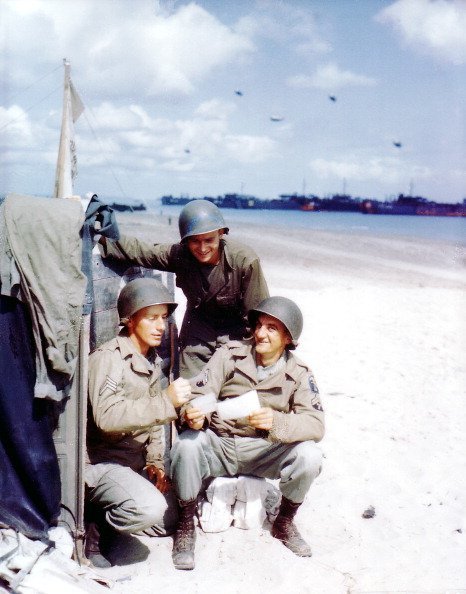
There was so much more to be done. More lives would be lost in the name of freedom. However, for this brief moment, three soldiers from the First Engineer Special Brigade are shown in this picture, allowing themselves a taste of home. They show each other photos as they reminisce, and long for a time when the fighting would be over.
Normandy Was Conquered
The beaches of Normandy were critical to their plan to push the tactical invasion through France. It served as their base, and from there they would relentlessly launch countryside attacks in the hope of sweeping the land clean. They fought in towns, followed meandering tracks, ambushed, and clashed in close quarters.
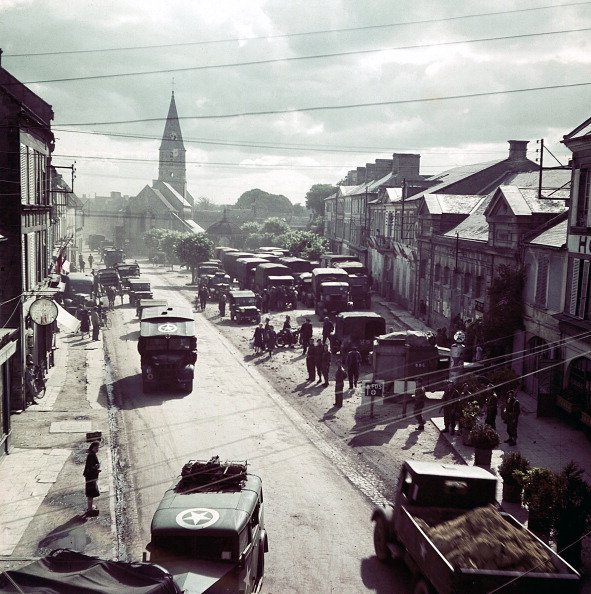
Soon enough, the Allied forces would increase their presence in the area. They secured the port of Cherbourg, the infusion of 850,000 troops and 150,000 vehicles followed. This picture shows the influx of US soldiers, military trucks, and jeeps driving into town after a hard battle.
The Attack’s Aftermath On France
The featured photo shows us what Normandy looked like after the initial push of Allied troops inland. Residences were turned to rubble after the bombing, and these soldiers were tasked with dusting up whatever was left of the resistance, which made them more vulnerable in close quarters.
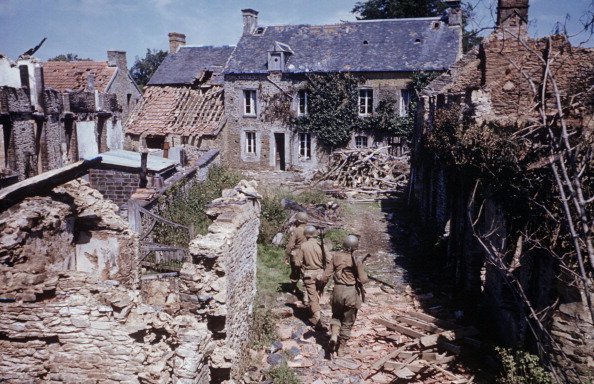
Meanwhile, enemy forces would regroup in neighboring towns. They would take advantage of the destruction of cities by setting up snipers in nooks, and placing traps. Shootouts became more difficult to win, and the Germans were determined to prevent the Axis from losing any more ground.
The Battle Of Saint-Lô
This photograph shows US soldiers marching in Saint-Lô after another major victory, on July 1944. Whatever beauty the place had was lost after a heavy Allied bombardment destroyed 95% of the city. Saint-Lô was later on referred to as “The Capital of Ruins,” because that is all that was left after it was finally conquered.
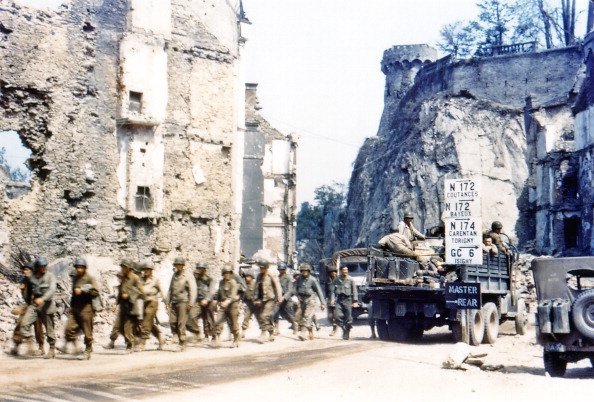
After the invasion of Normandy, this section of the country remained a vital point because of its strategic crossroads where food, medical supplies, and ammunition were sent through to keep the enemy strong. The Americans knew they had no choice but to win back the area. It was one of three major conflicts in the Battle of Hedgerows that occurred between July 9th and 24th.
The Aftermath At Saint-Lô
This photograph shows two boys, likely brothers, perched atop a tree, witnessing the Allied victory in Normandy. It doesn’t seem very much like the happy moment they must have anticipated when imagining the day the last of the Axis troops would be rooted out of their hiding place. The once proud buildings became badly perforated, some reduced to sticks, no bigger than toothpicks when viewed from a distance; in heaps of splinters, burning, broken, a shadow of Saint-Lô used to be before the war.
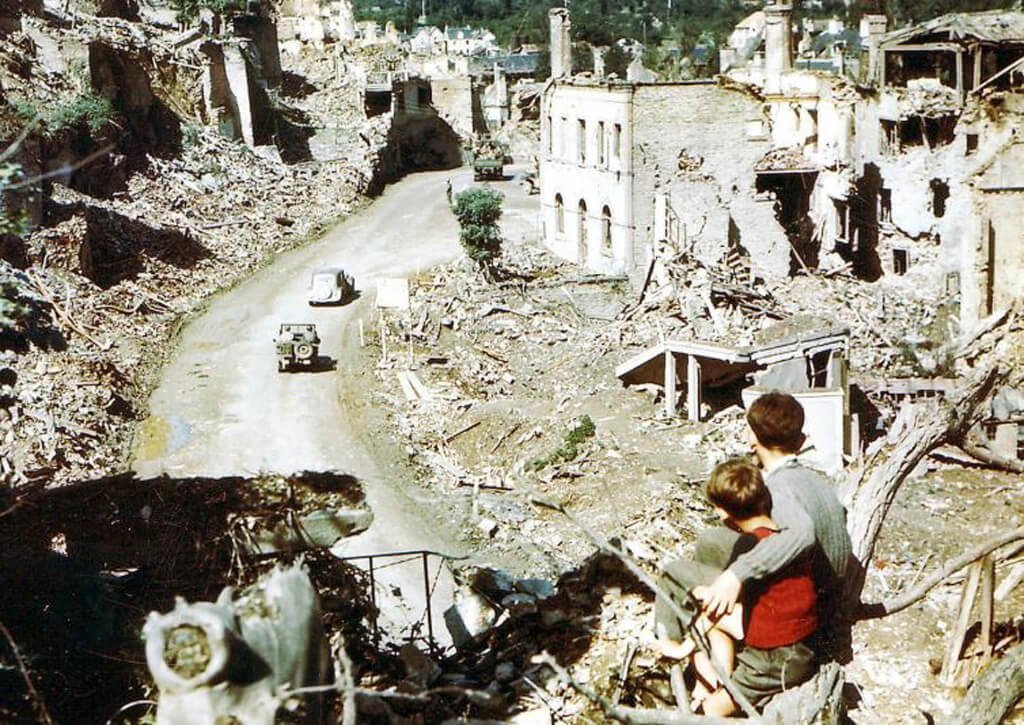
The Americans reached the Seine River, and Paris was liberated from the Nazis not long after. This was the last phase of the Battle of Normandy, and the objectives were veering towards Germany. They planned on meeting the Soviets from the East, so they could team up and surround the base of the Nazi regime and chop it down.
Welcomed By The French
The success of the Normandy invasion resulted in heaps of destruction. People were hungry and homeless, but with practically nothing left after the long battle, they welcomed the Allied troops with open arms. Never would you expect to see such smiling faces in the midst of such ruins.
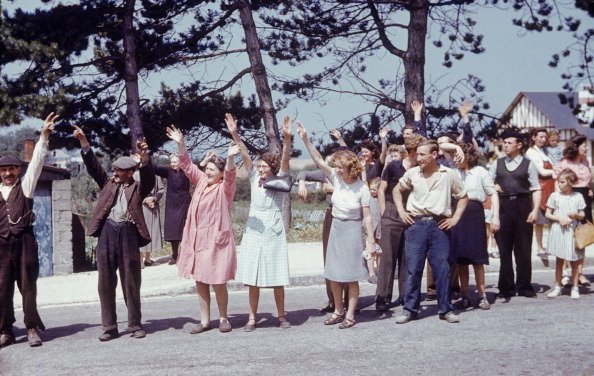
They were just glad the Nazis were finally dead or captured. Finally, they had real lives ahead of them again, a future to work on, and regain what had been lost. This was a major victory for the Allies. Without Normandy, the Germans could no longer send reinforcements through France to the Eastern Front to deal with the crawling Soviets. This proved a major disadvantage to them, and it would turn the tide forever against their cause.
Inside A Jewish Ghetto
This photograph was taken by Hugo Jaeger at the Kutno Ghetto, in 1940. Jaeger was a loyalist to the Nazi movement down to the very end, and he enjoyed taking images of Nazi parades, and the big crowds that showed its dominion. He even traveled to take such photographs after the blitzkrieg of Poland. Adolf Hitler himself was amazed by Hugo Jaeger’s work.
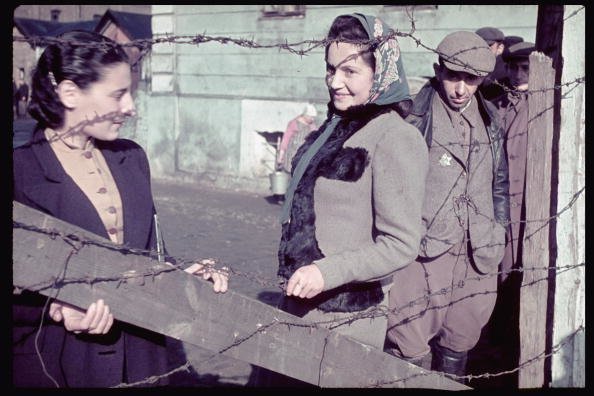
Above, Jewish women palaver behind the barbed wires that surrounded the Kutno Ghetto. The irony is expressed in their smiles; 30 miles from the Polish city of Lodz, most of them would be taken en masse to the Chelmno extermination camp.
Impromptu Graveyard In Warsaw
Poland had its back against the wall when the German forces invaded their country on September 1st, 1939. They would put up a fight against the invasion, however, on September 17th, the foreign forces would be further buttressed by the Soviets. They were attacked in every which way—air, land, and sea—and soon their cities and towns were stacked up with dead bodies.
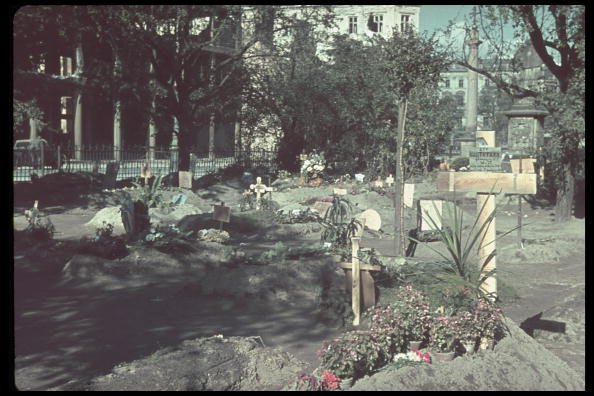
Preoccupied with the ongoing war, they no longer had time for the proper ceremonies normally afforded to the dead. Instead, they were forced to simply bury them wherever the ground seemed suitable.
They Never Stood A Chance
Poland became the staging ground for what would become the Second World War. The most devastating war of all-time started here, when Germany’s air force, the Luftwaffe, bombed the Polish town of Wieluń.
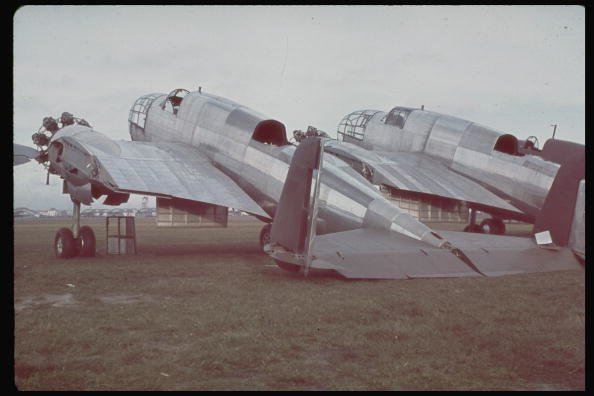
Taking Poland by surprise, the Germans compounded their air attacks by commanding their battleships to open fire. They bombarded a Polish base at the Westerplatte Peninsula positioned on the Baltic Coast. The Polish forces didn’t stand much of a chance, and the photograph above shows their unfinished aircraft at the Okezie military airport near Warsaw, helpless, as they were faced down by a far superior enemy.
Hitler’s Confidant
As dominant as Adolf Hitler was during the Second World War, he still needed somebody close to him that he could trust and confide in. The man to the right in the photograph is Heinrich Himmler, and he was privy to Hitler’s long-term plans.
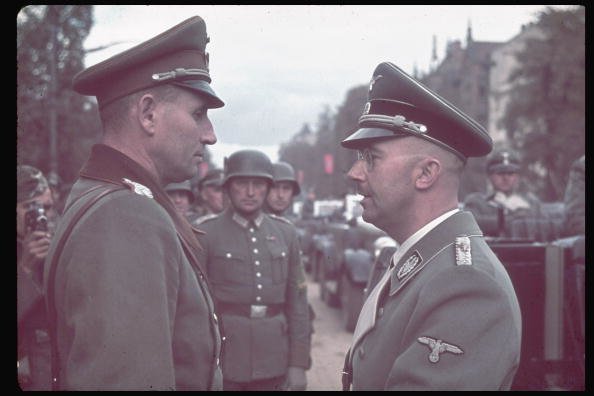
In fact, from 1929 to 1945, Heinrich Himmler was appointed Reich Leader of the SS Squadron of the Nazi party. Known as the Schutzstaffel, it was a major paramilitary organization that literally translates to “Protection Squadron.” Himmler was regarded as the second most powerful man in all of Germany at the time, and the dark mastermind behind the mass genocide of the Jewish people.
Forced Labor
Germany’s invasion of Poland sent Polish citizens sliding down into the dregs of a conquered society. They were completely overpowered, confused, still recovering from the shock of the unexpected battle. In fact, there are few formal documents to really show what most Polish citizens went through during captivity.
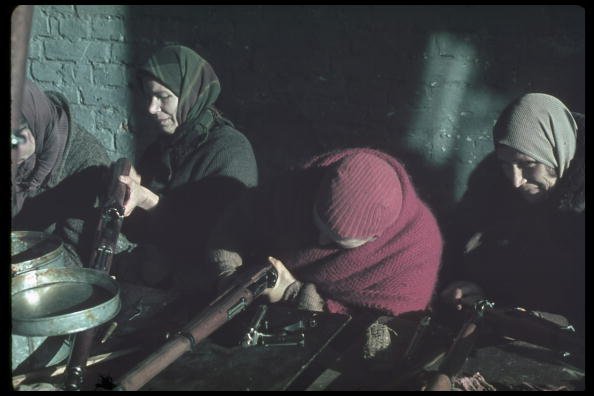
What we do know is, immediately after their defeat, Polish men and women were put to forced labor, as shown by this picture. They were ordered to clean captured Polish weaponry at the Modlin fortress just north of Poland. It is possible that some of them may have been sent to factories, and those that could not be taken advantage of—the old, and the sick—sent to extermination camps.
Work In The Ghetto
Jewish men, who were captives of the invading force, are seen rebuilding a part of the Kutno Ghetto that was damaged during the war against the Germans. Put into hard labor, they are no different from men being told to dig their own graves. They wear the Star of David badge while repairing what used to be a sugar factory.
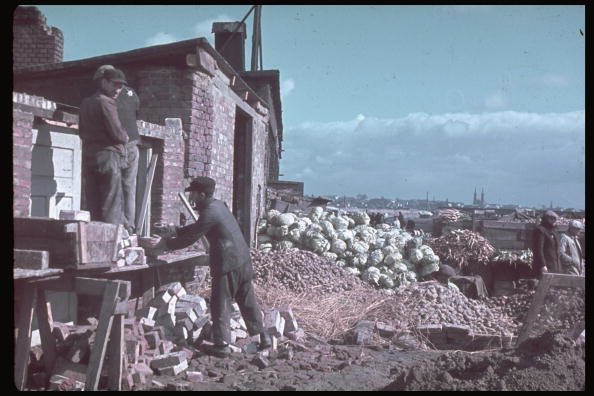
The occupying German soldiers would en-swathe the factory with barbed wires, and guard the area to prevent its prisoners from escaping. Inside the factory, all the sweetness of sugar changed to the smell of urine, feces, the breath of starving, sick, dying, and dead human beings. It is believed that the only time the residents of Kutno would be free again was through the extermination camps at Chelmno.
Children Were Not Spared
Photographed in 1940, unaware of what the world was coming into, these innocent children smile before the camera. Behind them is a tent made of tattered clothing, built within the Kutno Ghetto, where Polish prisoners were crowded and forced to work under Nazi command.
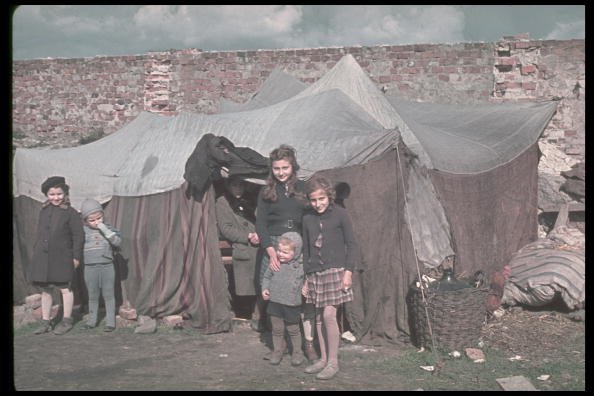
From 1939, the year of the German invasion, to 1945, an estimated 1.5 million Polish citizens were either put in labor camps, or sent to Nazi concentration camps. Around 1.9 million non-Jewish Polish citizens, and over 3 million Jewish citizens either died or were killed at the hands of their captors. Among those victims were defenseless women and children.
Polish People Were Left Homeless
The Nazis didn’t just invade Poland so they could take command of their strategic location and grow their dominion. After they bombed the country, not only did they pulverize military bases and government buildings, but they took down the homes of helpless civilians, too. Residences were destroyed, like the one featured in this photograph.
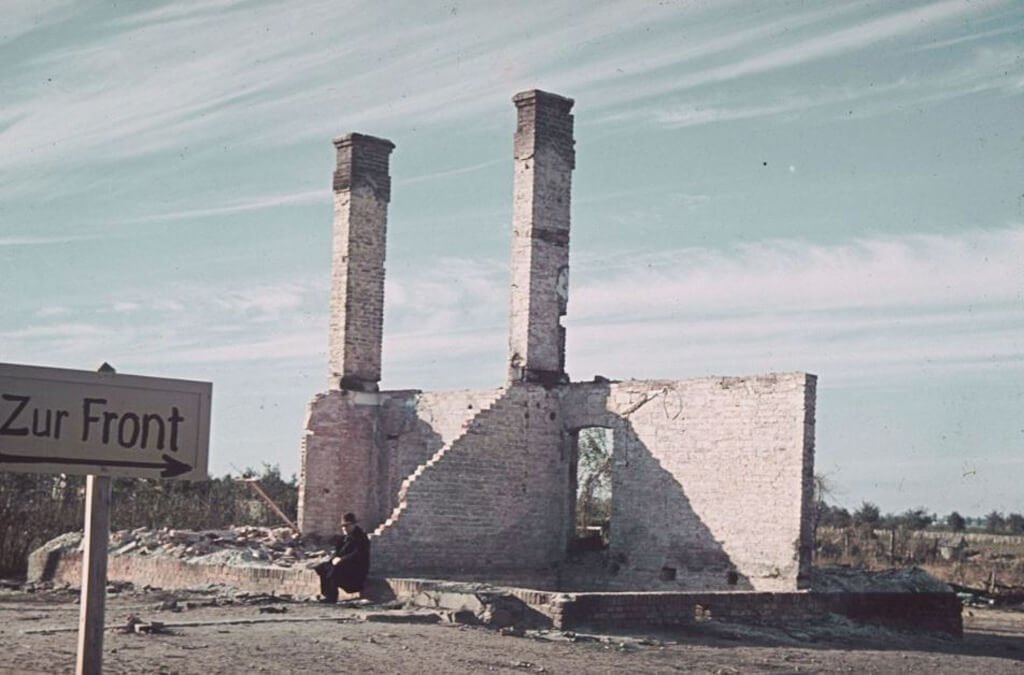
People were indiscriminately dragged out of their homes and sent to labor camps. Those who showed a bit of grit were killed in front of their families. There was resistance formed by the members of the once-Polish government stationed in London, but they could only do so much. When the war was over, only 1 out of 10 Jews living in Poland had survived.
Into The Devil’s Den
On a fateful day that would end with over 10,000 deaths, photographer Robert F. Sargent was able to take a stirring photo that shows US soldiers disembarking from their landing crafts to wade through sea water towards the beaches of Normandy.

The photographer was just arriving at Omaha Beach along with the soldiers, and he aptly captioned it “Into The Jaws Of Death,” where many were killed in action even before they could raise their weapons. Some found themselves lost in fear, psychologically broken down, dead within a minute of disembarkation. Sargent’s photograph was eventually colorized to bring it closer to a semblance of reality.
Helping Troops On Omaha Beach
Most of the photographs representing Operation Overlord are of young soldiers storming the beaches of Normandy. They are symbolic of the rush of emotions at the time, vivid, and frantic. This photo, however, shows us how these soldiers are also trained to look out for one another. A humanitarian side to the war.
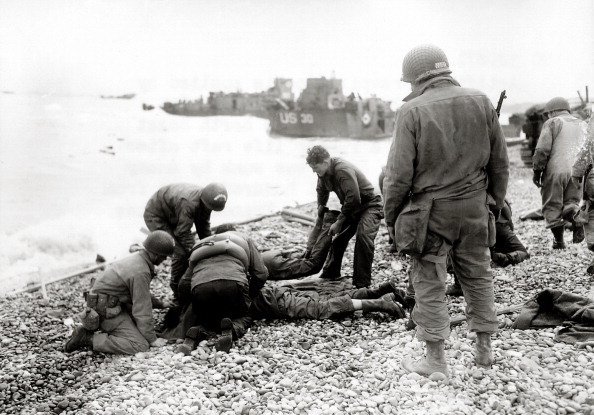
These servicemen are from the 5th or 6th Engineer Special Brigade. The photo was taken on June 6th, 1944. They are easily recognized through the white arc printed on their helmets and their jump boots. The Landing Craft Tank (LCT) 30 in the background was part of the Force O-2 attached to the 116th Infantry Division.
US Rangers On Their Way To Normandy
If it weren’t a time of great conflict, one would think this photograph simply shows US Rangers from E Company, 5th Ranger Battalion to be just a bunch of neighborhood boys having a field day someplace nice. They boarded their Landing Craft Assault Vessel in Weymouth harbor on June 4th, 1944, without a trace of worry on their faces.
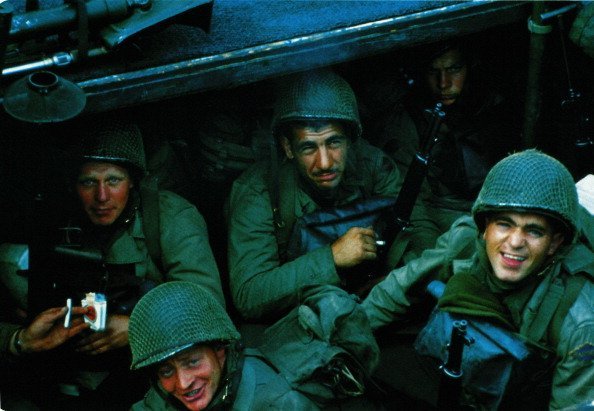
It would be a major turning point in the war, and these soldiers were part of that effort. First Sergeant Sandy Martin was killed instantly during the Omaha Beach landing. Corporal John Loshiavo, Technician Fifth Grade Joseph Markovich, and Private First Class Frank E. Lockwood are seen here holding onto a Bazooka, a 60mm mortar, a Garand rifle, and – most importantly – a pack of Lucky Strikes.
Getting Ready For D-Day
The Allied Forces had their eyes set on Normandy. To win the war, they knew they had to tackle the beach fronts, and from there push tactically toward France. They were ready to give whatever it took to gain that strategic advantage, even if it meant losing thousands of lives in a single day.
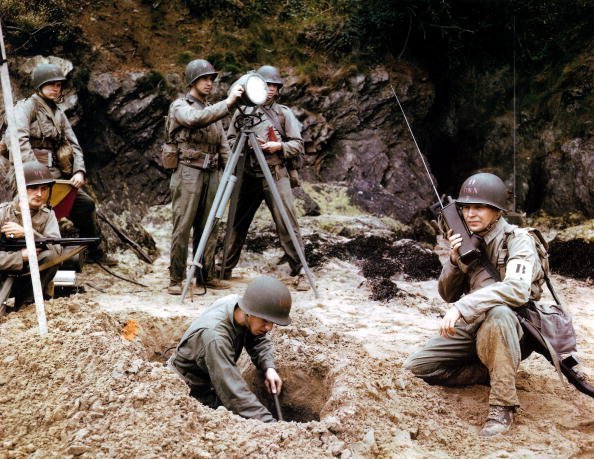
It also meant that they needed to train as hard as they could to perfect the execution of Operation Overlord. This photo shows US troops of the 7th Naval Beach Battalion training in Britain for the D-Day landing in 1944.
Operation Overlord And The Canadian Infantry
The silver lining of the Second World War was that it united many countries to rally behind the Big Three (the UK, the Soviet Union, and the United States) against the Axis powers. This would mark the time when leaders had to take a stand to quench the insatiable thirst of evil regimes; the birth of an alliance that would keep us safe up to this day.
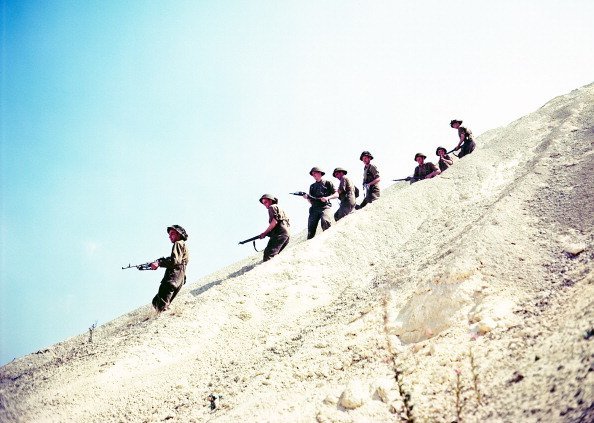
This picture shows soldiers of the 3rd Canadian Infantry Division patrolling the vicinity of Juno Beach. They arrived for Operation Overlord 14,000 strong on June 6, 1944, landing on the outskirts of Bernieres-sur-Mer. Unfortunately, 340 of them would die during the war effort.
A Patriotic Duty
WWII evoked a strong sense of duty among young men in America. A majority of them would volunteer to fight in the war, some eager to be of the right age so they could be shipped abroad and fight alongside their fellow men, in the spirit of brotherhood.
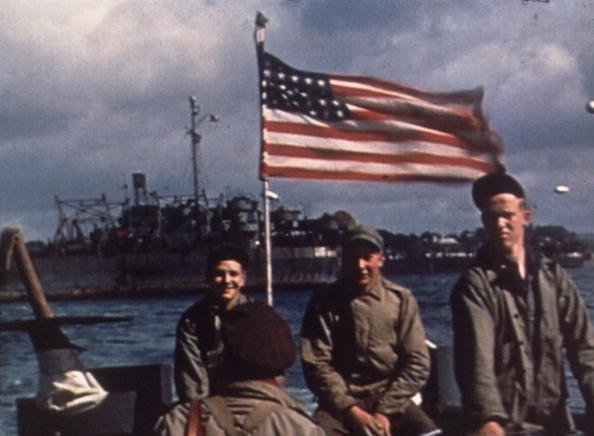
At the time, it was considered a shame to be a young man and not be part of the war effort. In this photo you can see how eager the soldiers are to be crossing the English Channel to prepare for the fight in Normandy. An American flag flaps against the zephyr that would carry their eager, yet terrified souls to Normandy for the D-Day invasion.
The Decimation Of A Nearby Town
Operation Overlord unleashed its wrath and destroyed everything in its path. It was a massive force of 156,000 fully-equipped men supported by warships firing continually from a distance. This would leave the shores of Normandy red with blood.
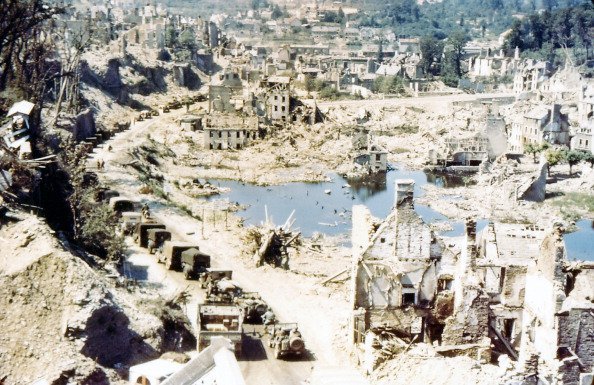
Not too far from the devastation on the beach lay the crumbled city of Saint-Lô. Not unlike the Omaha Beach landing, the streets were strewn with dead people. Death was everywhere, in the hills, under the ruins, its miasma permeating the atmosphere. Saint-Lô was bombarded by 2,000 Allied bombers, destroying 95% of the city.
The First Group To Invade Normandy On D-Day
The first group of men chosen to lead the attacks on Normandy were soldiers of the 1st Infantry Division of the United States Army. They are seen here preparing, as they board their Landing Craft Transport (LCT), aptly named “Channel Fever.” They were destined to cross the English Channel, cruising from South England and landing in France.
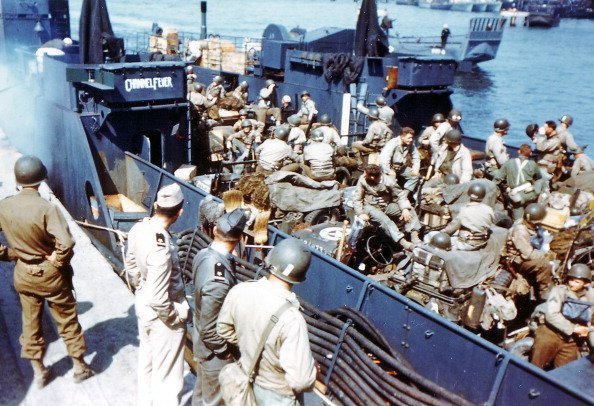
The men didn’t cower at the thought of breaking into the beach’s defenses first, taking on the task with pride and honor. They suffered a high casualty rate against a prepared enemy, but they were instrumental in the capture of Formigny and Caumont from the beachhead.
German Prisoners Of War
The Allied war effort was designed to encompass the enemy. It was large and composed of soldiers from various nations who were relentless in doing so. They were committed to ending Hitler’s evil regime, and the passion of the soldiers on the field reflected the nobility of the cause.
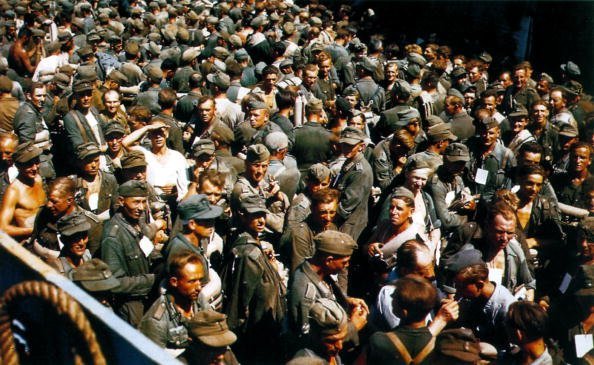
But the rules of war dictate how they would treat their prisoners. Pictured here is a large group of German soldiers who were captured after the Allied invasion on Omaha Beach, and a number of skirmishes on neighboring towns. They were to be treated as humanely as possible.
An Ammunition Box As A Dining Table
This photo shows two soldiers enjoying each other’s company while having their meals on top of ammunition boxes. This was a common sight during the heavy preparations for the D-Day invasion. They would load up the hefty amount of equipment needed, and when it was the time of day for a break, the men would find places to settle. In groups of two, they would eat, chat, rest, and sometimes even sleep. All of this on top of boxes of weapons, or explosives.
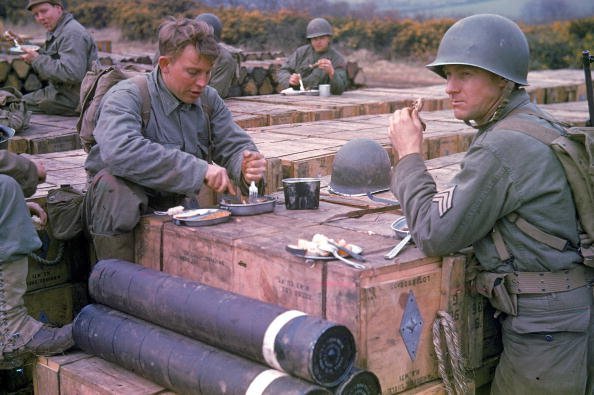
This was taken by photographer Frank Scherschel, on the 1st of May, 1944. The soldiers are located in Stratford-on-Avon, England.
Bringing D-Day To Life Through A Colorful Documentary
This is a photograph of one of the many places devastated during the bloodiest war in human history. It is a mere specimen of the bigger picture, that can now also be relived through a documentary titled D-Day in color. It is a 120-minute film that is narrated by John Hurt, who guides viewers through the inexplicable scenes and experiences the Allied soldiers underwent during the infamous battle.
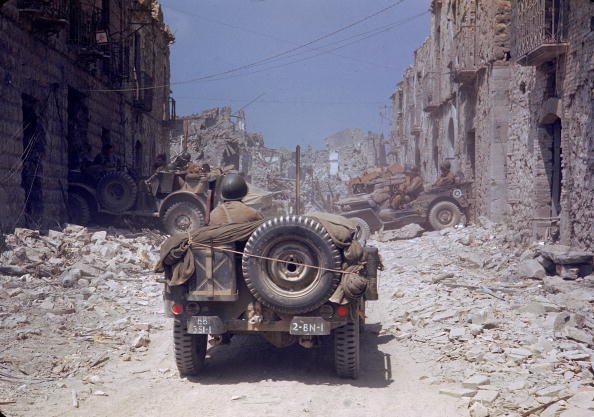
From the heavy preparations prior to the Omaha landing, to the psychological effects of the war on the soldiers, this digitized footage brings back the harrowing scenes of WWII. A reminder for us to never let such a tragedy happen again.
Before The Bloodbath
Based on the wide scale and importance of the Battle of Normandy, high casualty rates were to be expected on both sides. It wouldn’t be easy to cross channels without any place to hide against a well-prepared enemy shooting straight at you, and to land on the shores of Omaha Beach meant testing your luck running across a territory that was heavy-laden with landmines.
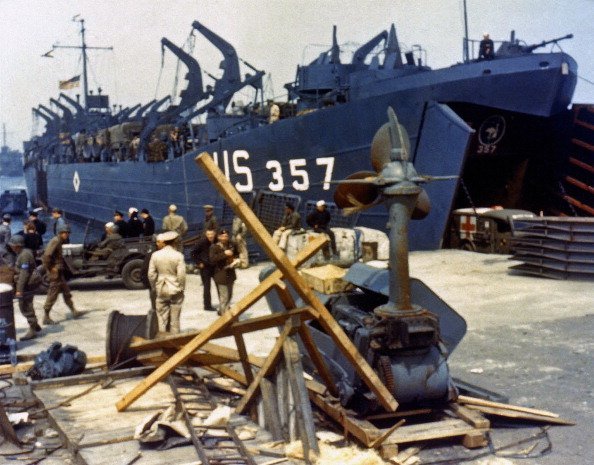
Determined to minimize war casualties as much as possible, military ambulances are here photographed streaming into the belly of Landing Ship Tanks. This was taken at Portland Harbour, Dorset before the D-Day landings in 1944. Despite the rules of war that allow medical vessels to pass unharmed, many medical ships were shot at, or destroyed, during battle.
Barrage Balloons On D-Day
Checking out these old photographs of the war can lead you to the rediscovery of many an unusual artefact. These retired and long-since forgotten tactical balloons are a great example of this phenomenon. What you’re looking at is a barrage balloon lined up in an unnamed base in Weymouth, Dorset, England on May 1st, 1944. It flies above the structure, attached to cables below.
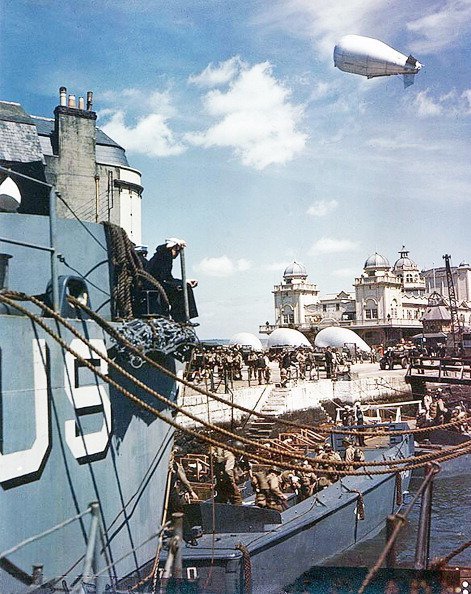
Barrage balloons look like a small-sized zeppelin and were used by the Allied forces to deter low-flying aircraft sent to sneak in undetected and drop bombs. These balloons were threats to the aircraft, posing as collision risks.
The Past In Striking Colors & Detail
With all the advances in photography available to us today, Photoshop experts challenge themselves by delving into old files and restoring black and white pictures that have yellowed on the edges; faces blurred.
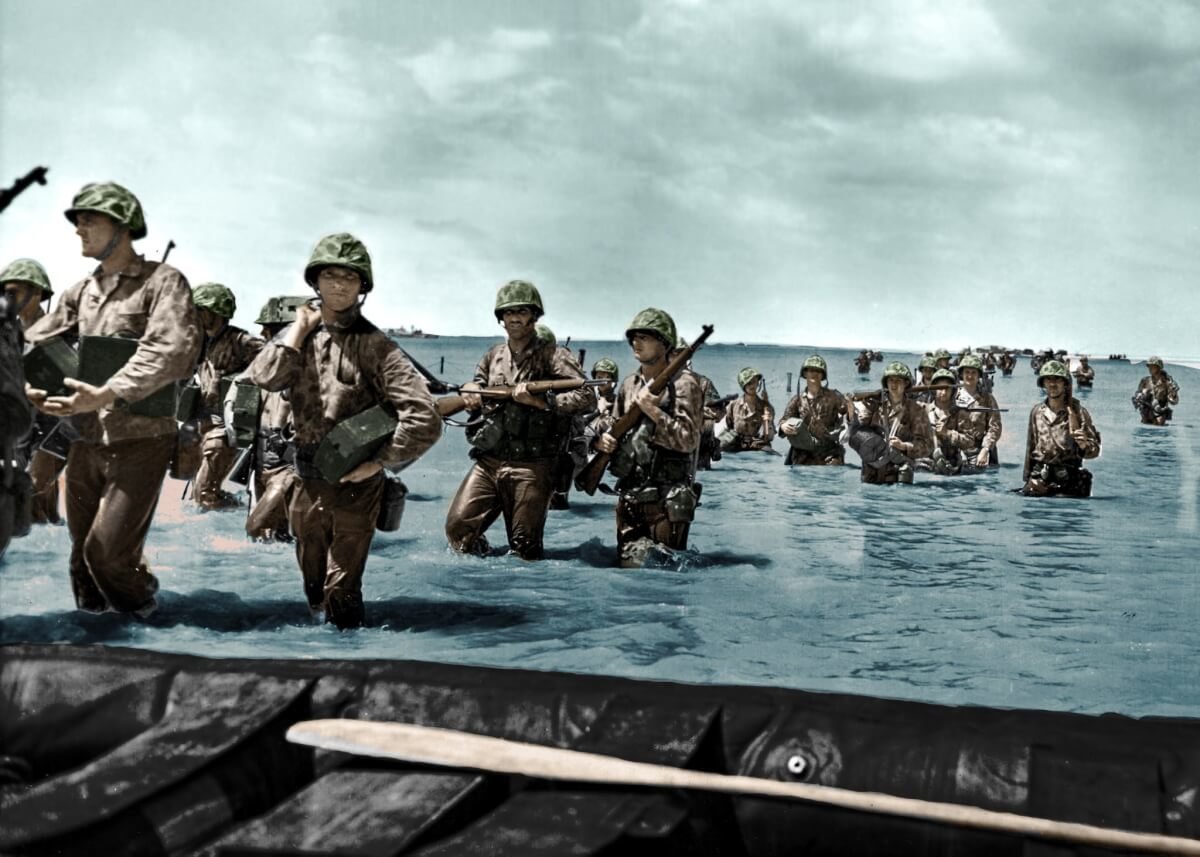
This D-Day picture was merely part of a YouTube tutorial from David Galvan. Allied troops are seen wading, as they had during so many training maneuvers, on the beach of Normandy, France. The water has never looked so green on an original D-Day photograph, the soldier’s pans etched, the skies grey.
IX Bomber Command
These are the same aircraft that bombed Saint-Lô to smithereens after the Allied forces took control of the shores of Normandy. Flying in formation, they look so proud and tactical; 100% strike-ready. These birds are B-26 Marauders with the 344th Bomb Group.
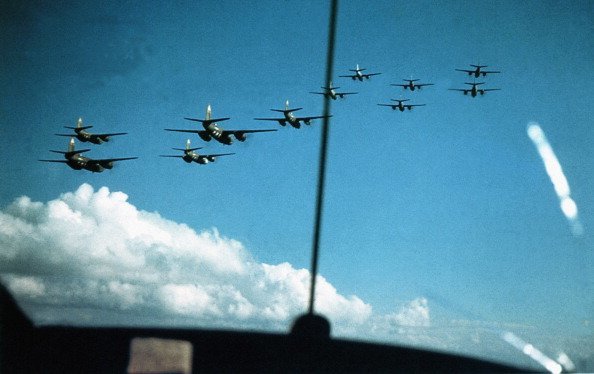
They are part of the United States Air Force. The 344th is nicknamed, “Silver Streaks,” and they led the IX Bomber Command formations on D-Day. Before the Normandy invasion, Caen, Saint-Lô, and the Falaise Gap, these bombers conducted raids over the skies of German-occupied Belgium, France, and the Netherlands.
Operation Overlord
The Battle of Normandy was codified as Operation Overlord, under the command of Gen. Eisenhower. It was a battle that would eventually turn the tide of the Second World War to the Allied forces, starting with its pivotal June 6th, 1944 operation.
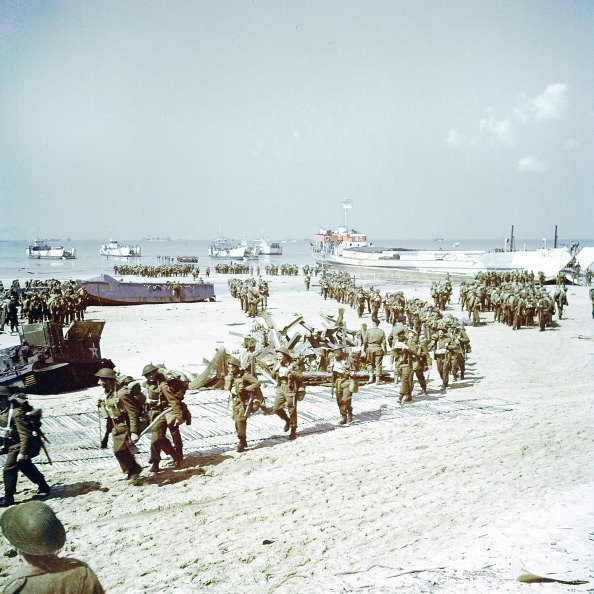
This is a colorized photograph of Canadian forces that landed on the outskirts, near the town of Bernieres-sur-Mer, in Northwestern France. A total of 14,000 soldiers were deployed from Canada to contribute to the war effort. These men here belonged to the Saskatchewan Regiment of the 2nd Canadian Infantry Division. The group reportedly lost 340 troops on the beach that fateful day.
Preparing To Land In Normandy
This colorized photograph was taken during the massive preparations prior to the Normandy invasion. Like never before, we are able to appreciate the shades of green in the landing ship and military uniforms, the yellows and browns of the soldiers’s sun-burnt skin.
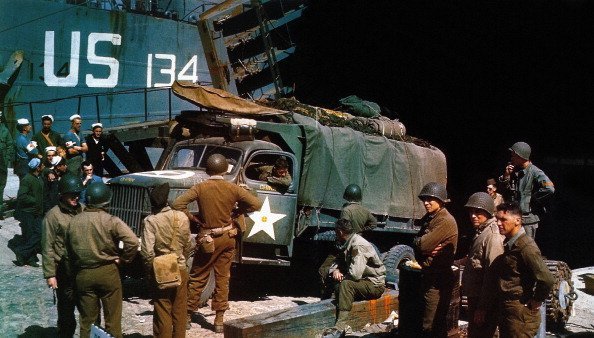
A US Army GMC truck is being loaded into a landing vessel. This took place at Portland Harbour, Devon. And the outfit’s spirits were running high at the time with expectations of battle. Also shown in the background is a U.S. tank LST-134. This tank is part of Group 30 of LST Flotilla 12. It had been scheduled to leave for Omaha Beach in France. The LST-134 in the background was scheduled to depart for Omaha Beach.
The 3rd Canadian Infantry Division
When the Canadian government approved the sending of troops to be part of the Allied forces, it created the 3rd Canadian Infantry Division, officially authorized on May 17th, 1940. They were fully-trained, and 16,000 strong. They fought and some of them died alongside US troops in the critical Battle of Normandy.
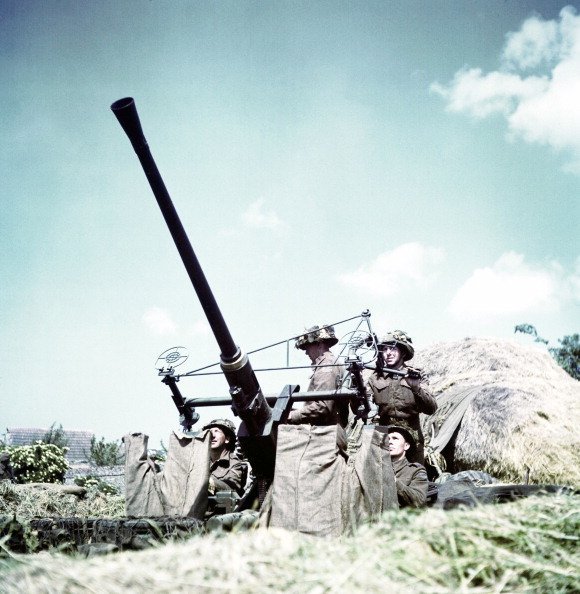
Of all the Canadian troops sent out to war, the 3rd Canadian Infantry Division suffered the most losses. They posed problems to the German Luftwaffe warplanes with their anti-aircraft weapons installed around Juno Beach after they landed on Bernieres-sur-Mer.
Prisoners Of War
The German soldiers became as weary as their Allied counterparts, as the Second World War tore away beautiful places and innocent lives for so many years. As the battle wore on, many of them were captured. Over time, a number of these captured soldiers began to wonder if all the suffering was truly worth it. Was it time to stop fighting?
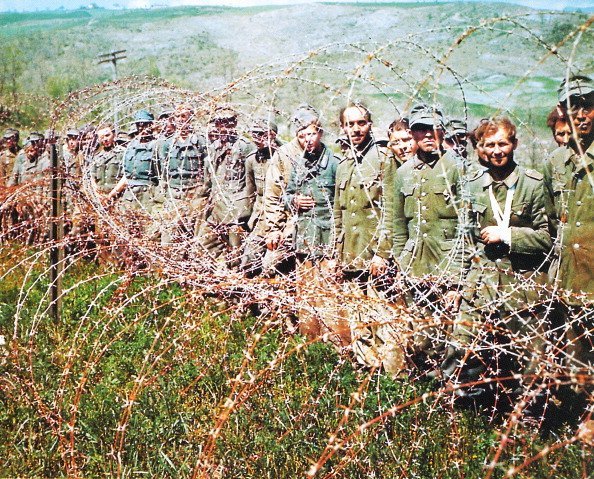
Here is a dramatic photo of some of the German captives, enclosed with twirling barbed wires. Private Helmut Roemer, one of those captured early on in battle, said in an interview with the BBC, “[we] were exhausted and we decided to hand ourselves over to the British, thinking, ‘Either they will shoot us or they’ll take us prisoner.’”
Landing Craft Infantry
This is a photograph of US Army soldiers, all bustling at a port in Southern England, boarding a Landing Craft Infantry. They are in the middle of their preparations for the big day. In fact, this was taken on the eve of D-Day, where they would soon cross English Channels and face their fears in pursuit of their main objectives, for being in the forefront of the war.
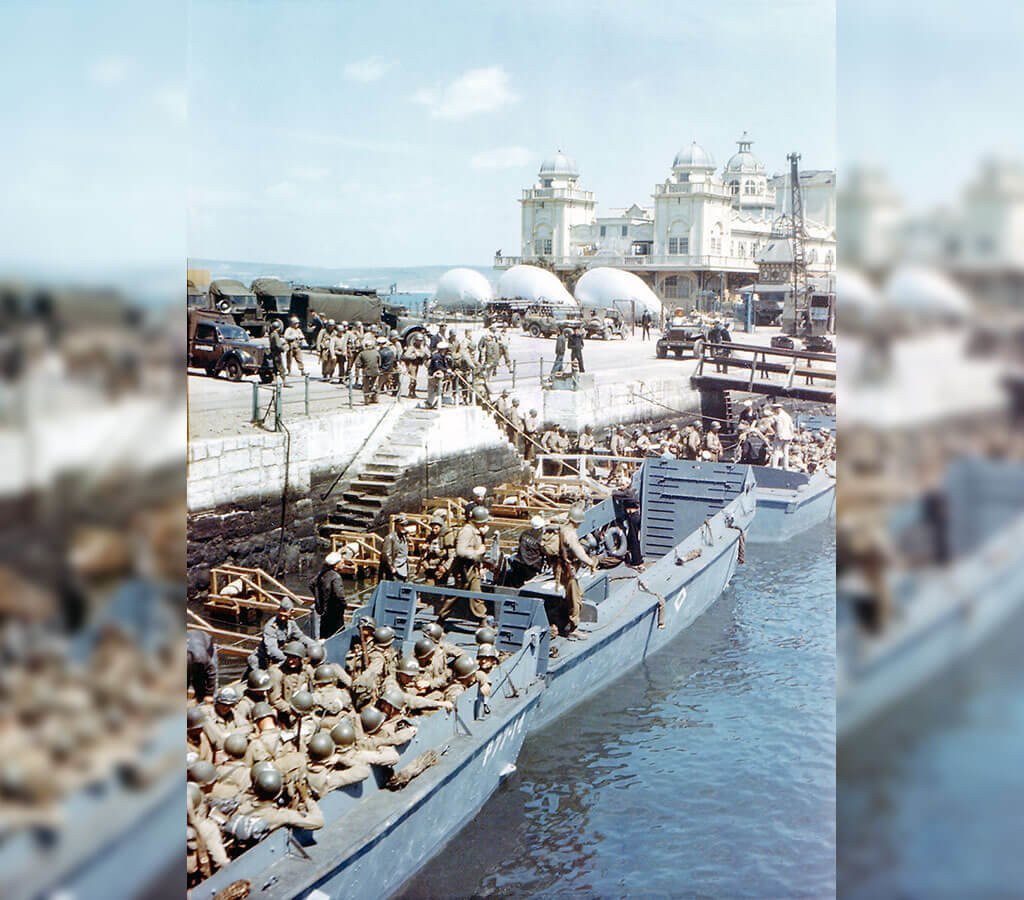
Most of the men in this photograph, taken on June 5th, are from the Engineer Special Brigade. You may readily identify them by the white symbol on their helmets. Behind the troops are barrage balloons. These silver objects were used as a defense against low-flying enemy aircraft.
Polish Refugees Hoping to be Rescued
Migration was a prominent consequence of the war; as the scale of Nazi crimes increased, families left burned-down towns, and children were sent to safer areas. Out of 150 refugees who escaped Lodz, Poland, only a handful survived. They walked along the railway lines on the outskirts of Berlin, in the brutal cold, hoping to be picked up by a British train.

Some estimate that a total of 60 million Europeans became refugees during the World War II period. And the United Nations stat ed that by by 1951, more than five years after the fighting stopped, more than a million people still hadn’t found a place to call home.
War Dogs
Dogs have been used in human warfare since ancient times, serving as mascots, sentries, messengers, and even attackers. Both the Allied and Axis powers had large amounts of chemical weapons and countermeasures for use in the western front of World War II, but neither side wanted to be the first to use chemical weapons offensively, considering the inevitable counter response. Even so, both sides were prepared for chemical warfare, and because of their critical combat role, as were their dogs.
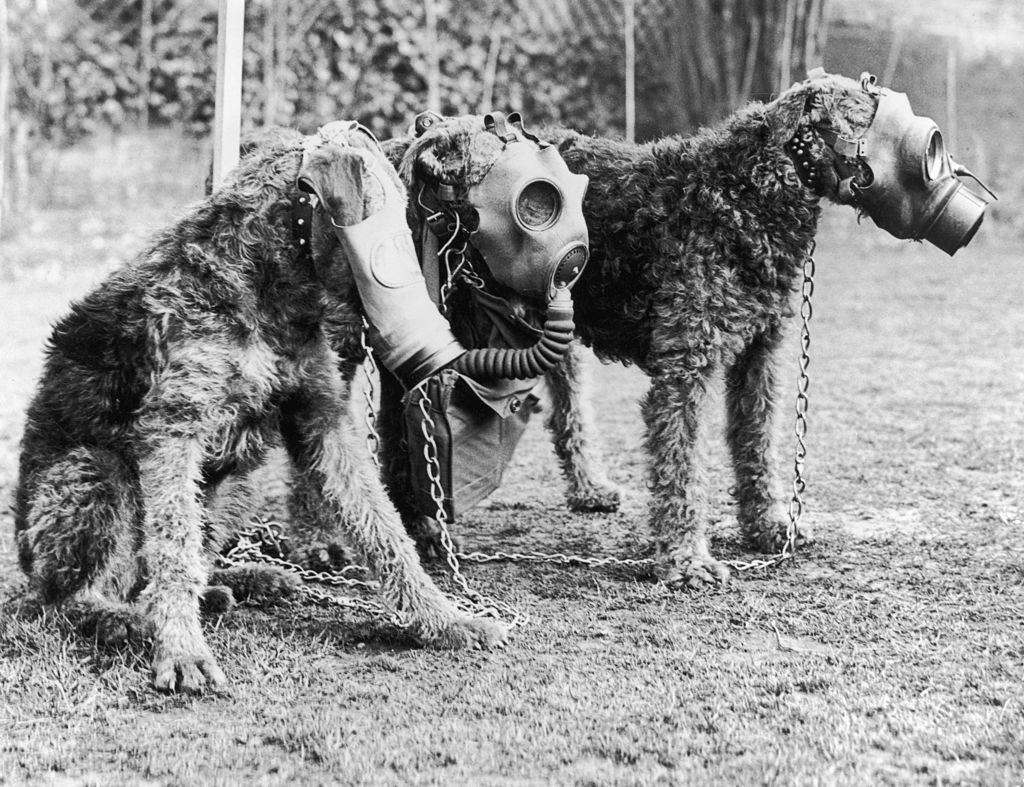
This photo from 1939 shows three Airedale dogs wearing their custom made gas masks at a Surrey kennel. The canines were being trained by Lt Col E. H. Richardson.
The Original Girl Power Movement
With the majority of the male population at war, “We Can Do It!” World War II posters encouraged American women to join the work force and contribute to the war effort. Five million women would enter the workforce between 1940-1945.
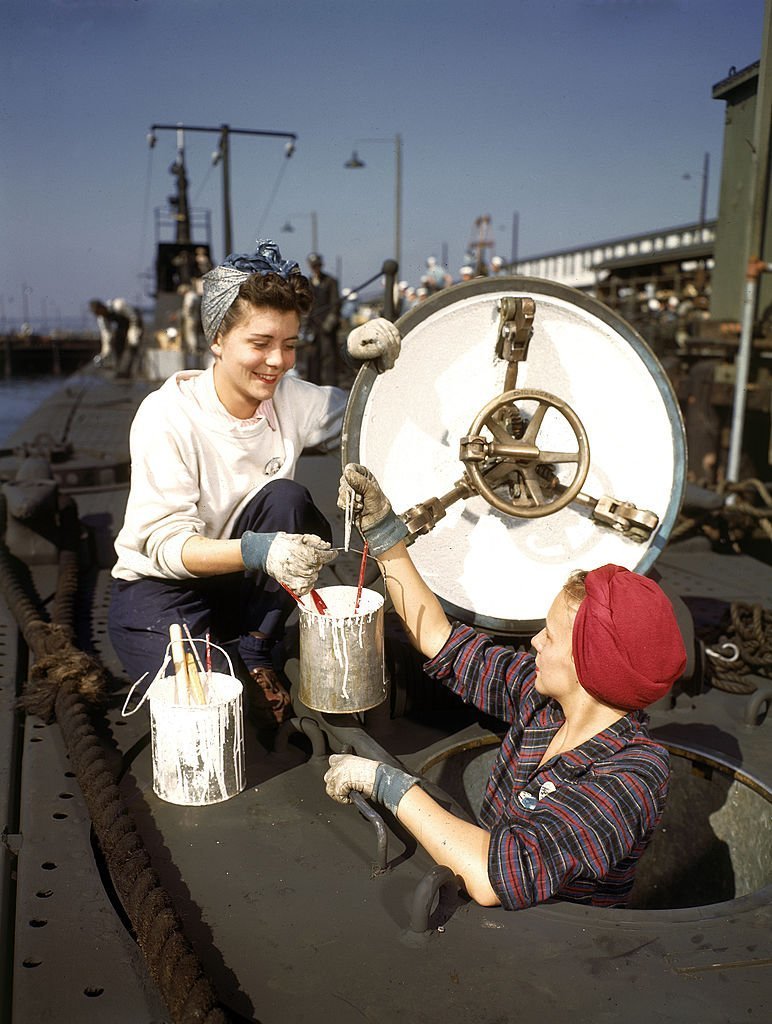
Here two women worker look cheerful as they paint the inside of a hatch on the deck of a submarine at the Electric Boat Co., in Groton, Connecticut, in October 1943. Later, the company would be known as General Dynamics Electric Boat, which produced more than 70 submarines and almost 400 PT boats during World War II.
Hungarian Ghetto
The Budapest Ghetto was a Nazi ghetto in Budapest, Hungary, that existed from November 29, 1944 – January 17, 1945. Its area consisted of several blocks of the old Jewish quarter. By a decree of the Hungarian Government, Jews were forced to relocate there during the final stages of World War II.
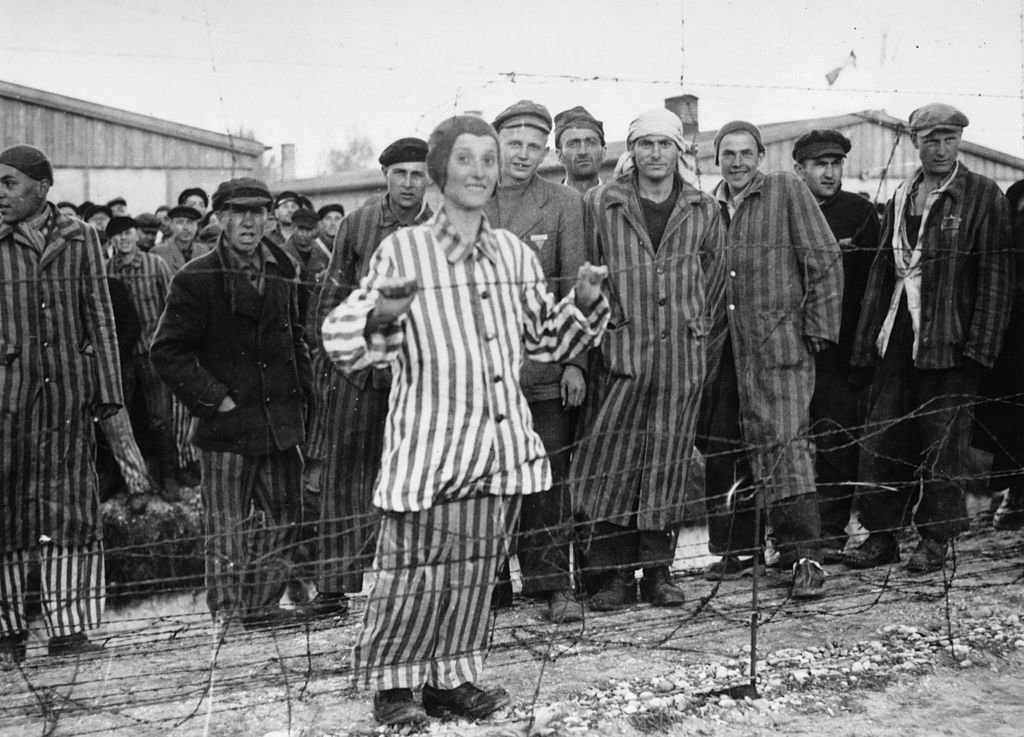
This Hungarian Jewish boy in the infamous blue and white striped prison suit, smiling behind the barbed wire fence at Dachau concentration Camp. He was expected to be gassed in a few days time but was saved.
Hitler Sipping Tea Amidst Horrors
Only a small number have been allowed into Hitler’s personal space, let alone take pictures inside. This is where the dictator relaxed away from masterminding his war efforts. This photograph from the late 1930s, was taken by Hugo Jaeger, one of Hitler’s personal photographers between the years 1936 and 1945.
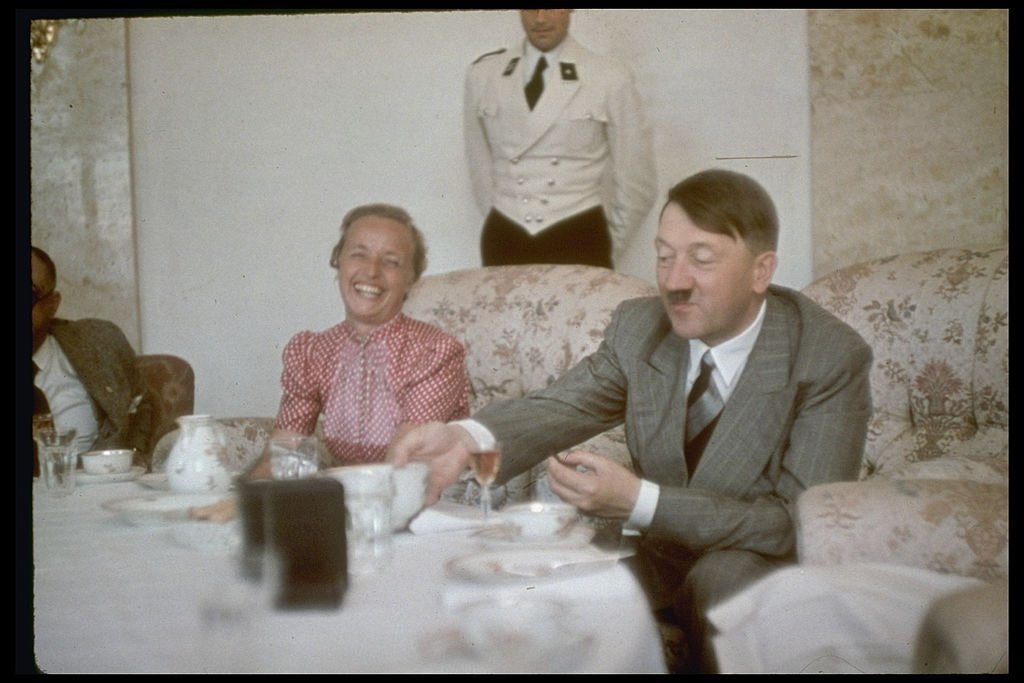
In it, you can see Hitler hosting friends at his home in Berghof, Berchtesgaden, Upper Bavaria, Germany. His personal physician, Professor Theodor Morell (far left) sits with the wife of Gauletier Albert Forster, and Hitler.
The London Milk Man
Germany had just lost the Battle of Britain, which was one of the first big hits to Hitler’s strategy. Devastated and embarrassed, Hitler tried to turn London into hell. From September of 1940-May 1941, German forces dropped bombs day and night, on Great Britain, specifically London, with the intention of demoralizing Britain and forcing them to surrender. This attack became known as The Blitz.
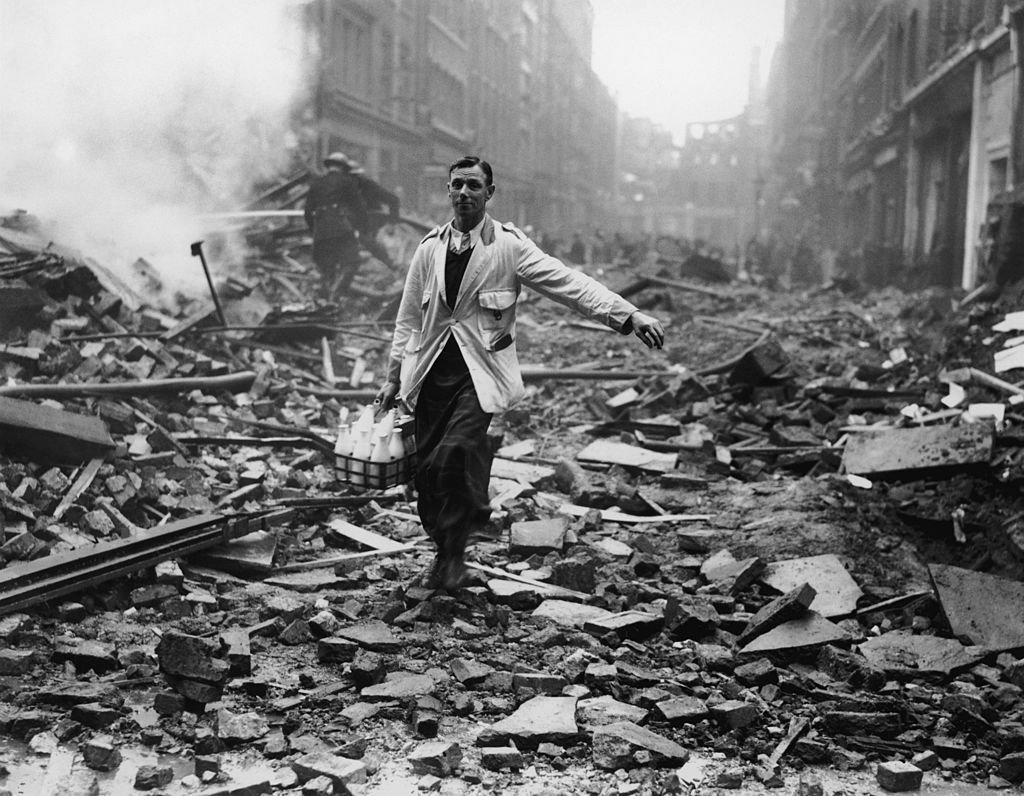
A British photographer by the name of Fred Morley knew the power of images. So in an attempt to boost the morale of his people, while also sending a message to Germany that despite the Blitz, Britain was still holding strong, he staged this famous photo of a cheerful milkman delivering milk in the devastated London streets.
Women Come to the Rescue
Winnie the Welder, A.K.A Wendy the Welder, was the moniker given to 2,000 women who joined forces during World War II, to build war ships and subs, taking over jobs that before had exclusively done by men.
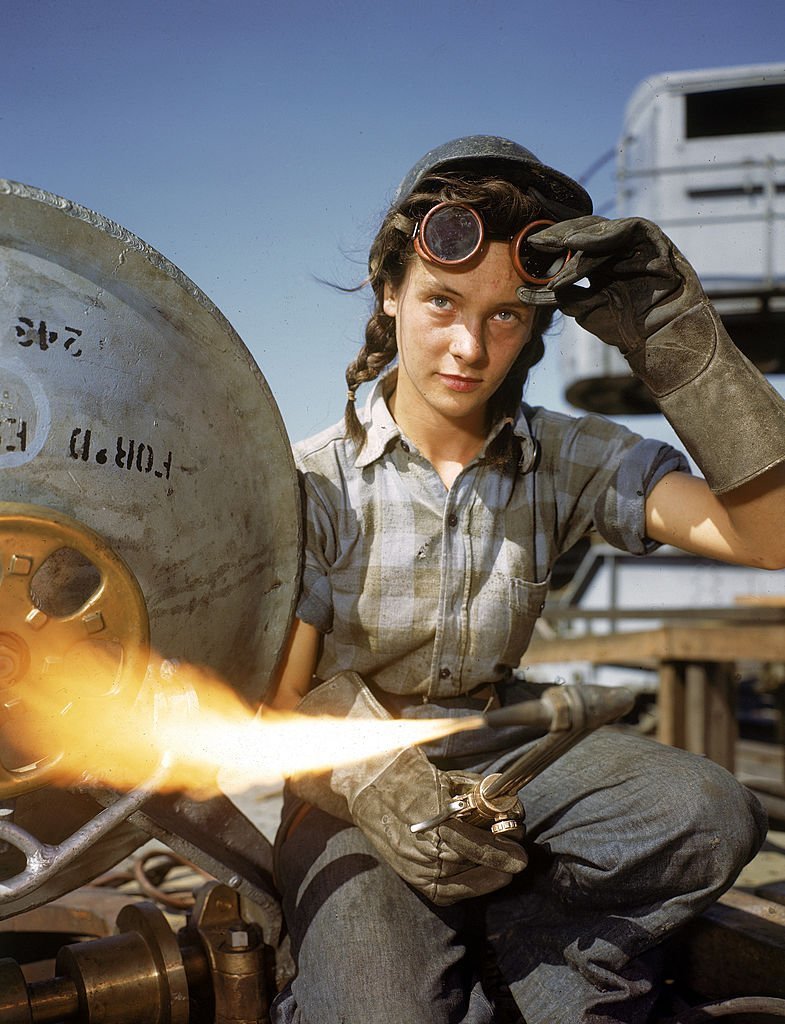
LIFE photographer, Bernard Hoffman, took this photo of a young female welder as she adjusted her goggles at the Electric Boat Co., Groton, Connecticut, in October 1943, a groundbreaking time for women in the workplace. After the war, many women were fired from these types of jobs.
Soldiers in the Land of the Pharaohs
In this photo you can see The Queen’s Own Cameron Highlanders (Scottish Division) and Indian troops marching between pyramids, as part of Allied defense preparations against Italian attack during WWII.
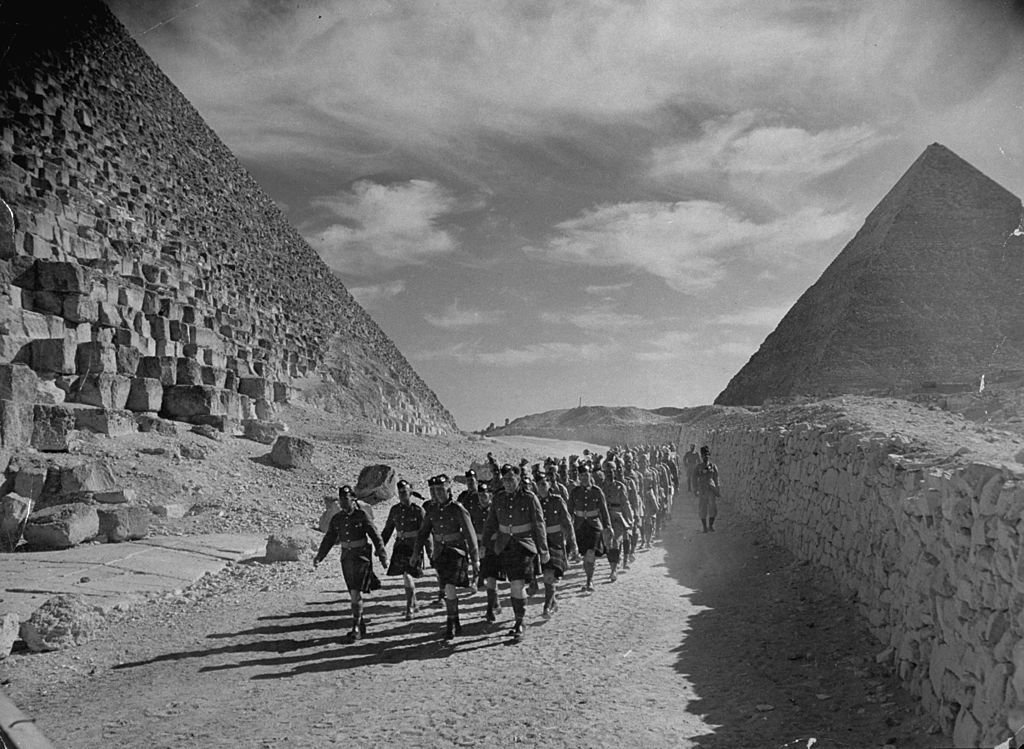
After the Italians experienced a series of devastating defeats in Africa in the late 1940s, they requested assistance from the Germans. And thus, the Afrika Korps was formed.
Sweet Goodbye
War always brings many emotional moments, with death comes sadness and agony, but also pride and a moments, even joy. This American soldier says goodbye to his wife and infant child at the Pennsylvania Station in New York, New York in 1943, before being shipped to service in World War II. Both the parent are aware that it may be the last time the father sees his small family.
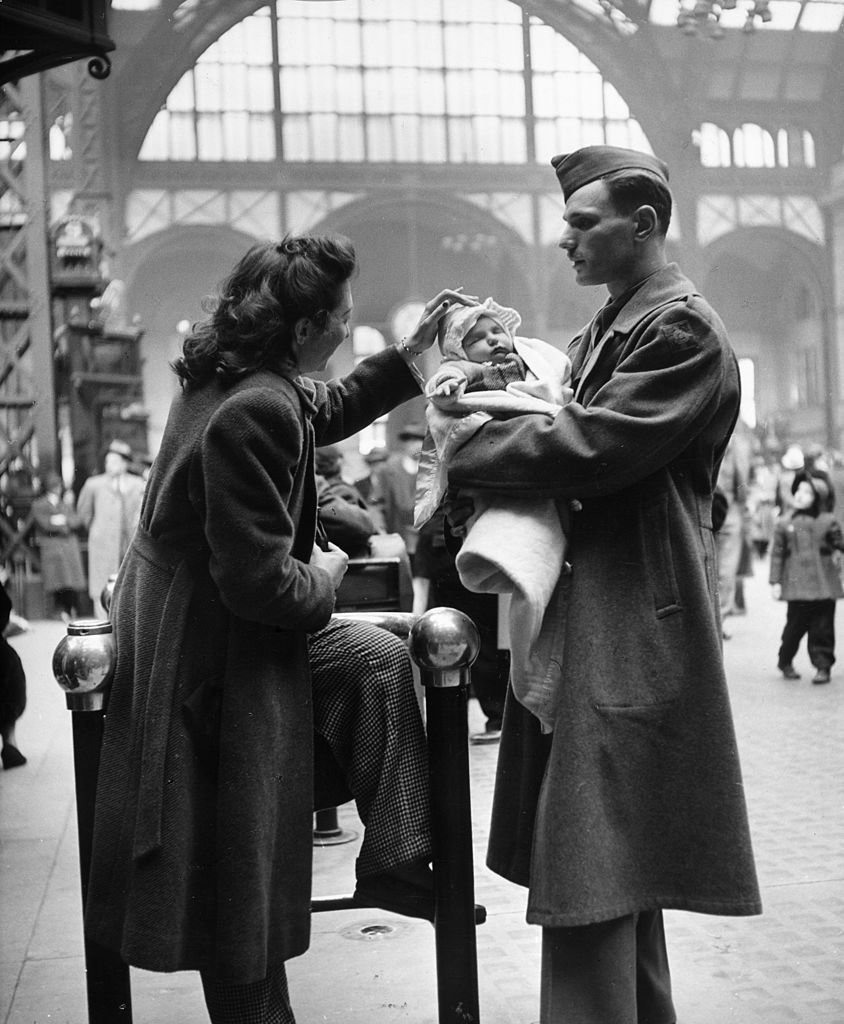
Around 850,000 New Yorkers served in WWII. The New York city as a whole suffered 43,000 casualties, more than any other American city.
Look Out Hitler
September 1939, during the “Phoney War”, a Scottish soldier of the The Queen’s Own Cameron Highlanders, chalks a warning to Hitler on the side of a train that reads, ‘Hitler! Look oot the Jocks are Coming’. The troops were leaving home to join the The British Expeditionary Force (BEF) in France.
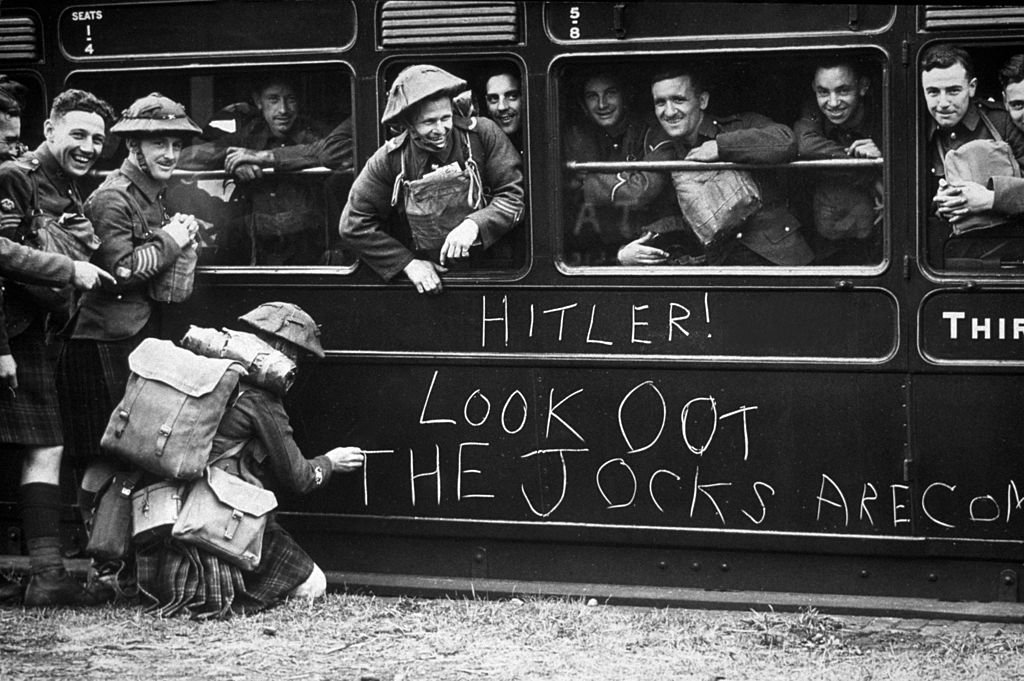
The Phoney War refers to the eight-month period (September 1939-May 1940) at the beginning of World War II, during which there was only one military land operation on the Western Front- when the French invaded Germany’s Saar district. While at that time there was no large-scale military action by Britain and France, they however begin economic warfare, and shut down German surface raiders.
Men of the Fifth Army forces
The history of African Americans in the U.S. military spans from the arrival of the first enslaved Africans during colonial United States. In every war fought within and outside of the United States, African-Americans were in the front lines, from the Revolutionary War, to the more recent wars in Afghanistan and Iraq as well as other minor conflicts.
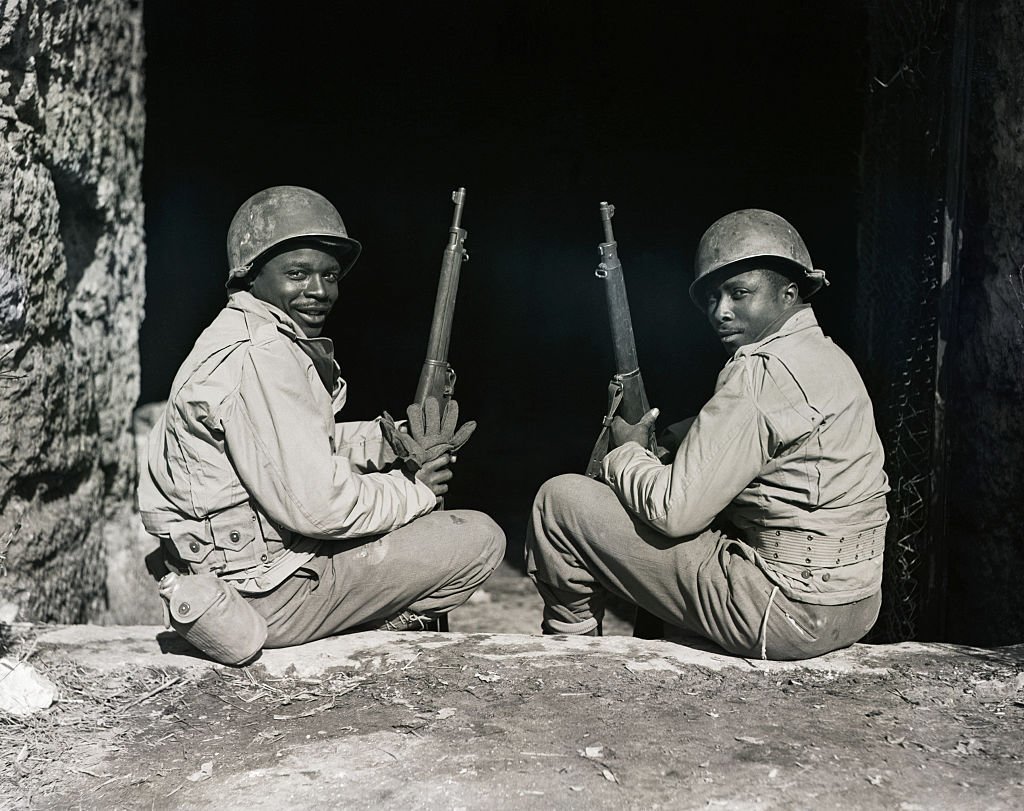
Here members of the Fifth Army forces, Pvt. Roy Williams of Savannah, GA, and Pvt. Jackson Brown of Dele, SC, enjoy the sunshine at the entrance to a shelter of the Anzio-Nettuno beachhead. While they fought for their country in the front lines abroad, when they’d return home they would still be treated as second-class citizens.
Off With Her Hair!
During la Libération, French woman’s heads were shaven bald as punishment for collaboration horizontale, which referred to women who were accused of having sexual intercourse with German soldiers. In many of the 20,000 documented cases, the suspected women had only performed professional services for the occupying Germans, rather than engaging in sexual relationships with them.
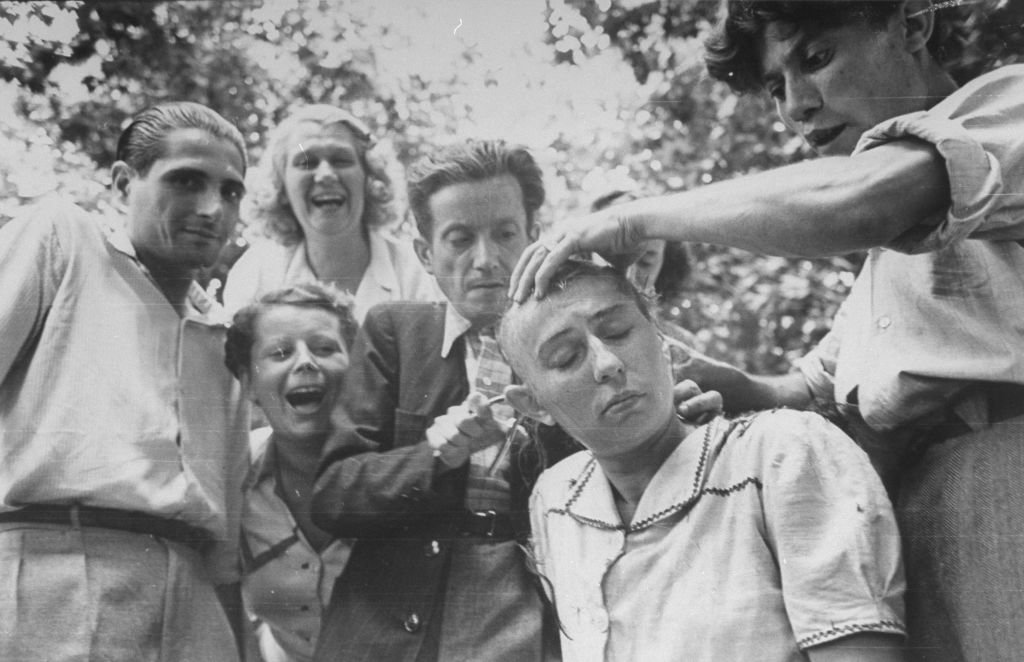
It’s estimated that “Collaboration horizontale” produced 200,000 French babies with German fathers. In 2009, Germany offered these children citizenship, after French foreign minister Bernard Kouchner had lobbied for their recognition as German descendants.
The Battle of Britain
On the night of October 14 1940, German forces air raided London during the battle of Britain. The bomb went through a road and exploded in Balham Underground station, killing 68 people, and destroying part of the tube station underneath.
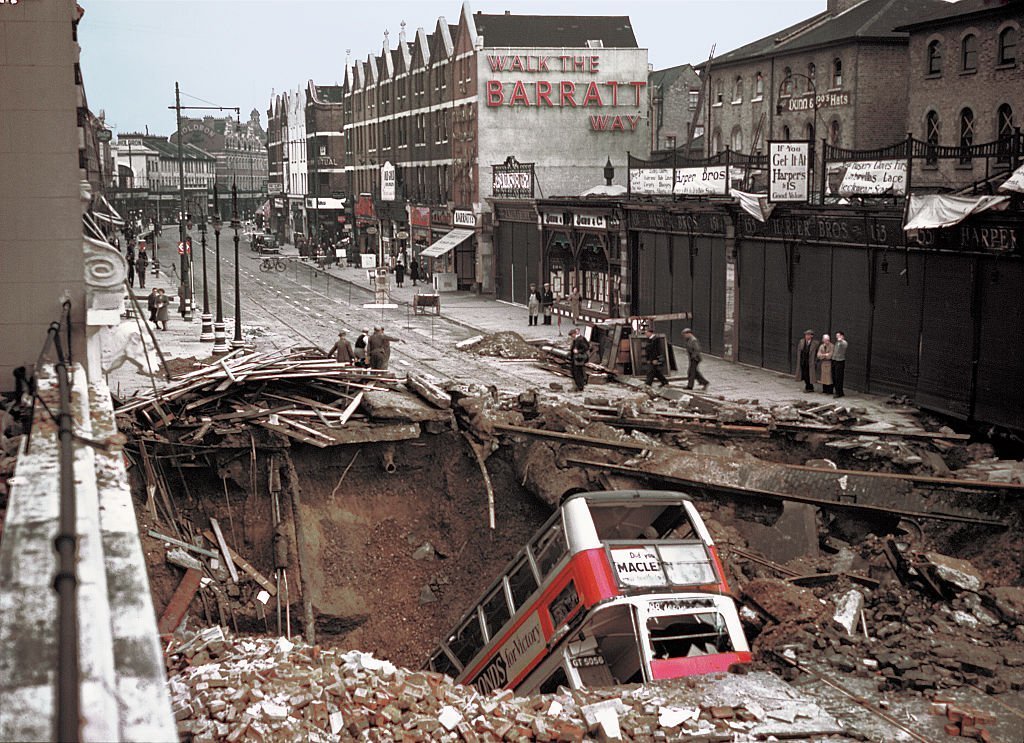
Tragically a No 88 bus travelling in black-out conditions fell into the huge crater left after the bombing. This is what the scene looked like the morning after.
Optical Illusion
May 16, 1940, was officially declared called “Nylon Day,” after four million pairs of nylons were stocked in stores and sold out within two days! A year later, this revolutionary product became extremely scarce when the American economy directed all nylon into manufacturing parachutes, rope and netting for the war.
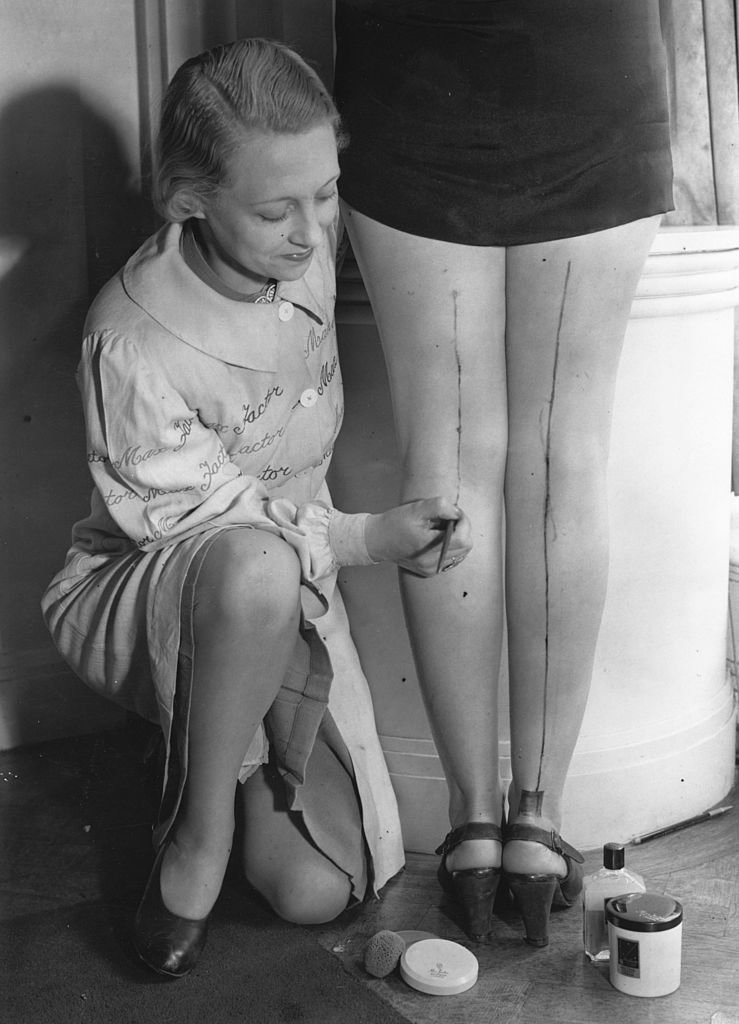
Women still desired to keep up with the fashion, but all the nylon had been rationed for the war, completely disappearing from department store shelves. So they got resourceful, and began to cover their legs with nude-colored makeup, and line the back of each leg with a back “seam” drawn with an eyebrow pencil topped. Viola, paint-on hosiery!
Cruel Punishment
During World War II Japan attacked nearly all of its neighboring Asian countries, allied with Nazi Germany and later launched a surprise attack on the U.S. naval base at Pearl Harbor, Hawaii.
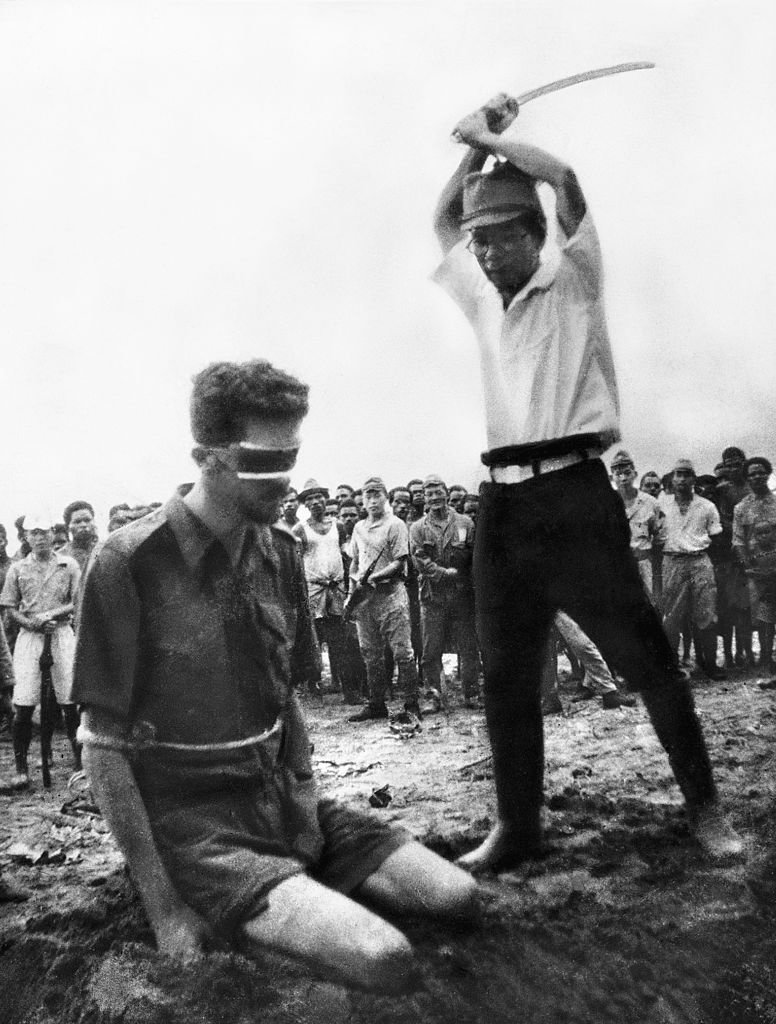
The Japanese were infamous for being ruthless. In the photo above you can see officer Yasuno Chikao moments before beheading the captured Australian pilot, Leonard Siffleet in Aitape, New Guinea, on October 24, 1943. While on mission in Papua New Guinea, Siffleet and two Ambonese companions were captured and handed over to Japanese forces. All three of the men would be interrogated, tortured and later beheaded.
Women’s Army Corps
In 1945, the 6888th Central Postal Directory Battalion was formed. It was the only all African-American and all-female battalion during World War II. Working in France and England, made them the first black female battalion to serve overseas. The battalion was commanded by Major Early (in the photo below) and composed of 30 officers and 800 enlisted women.
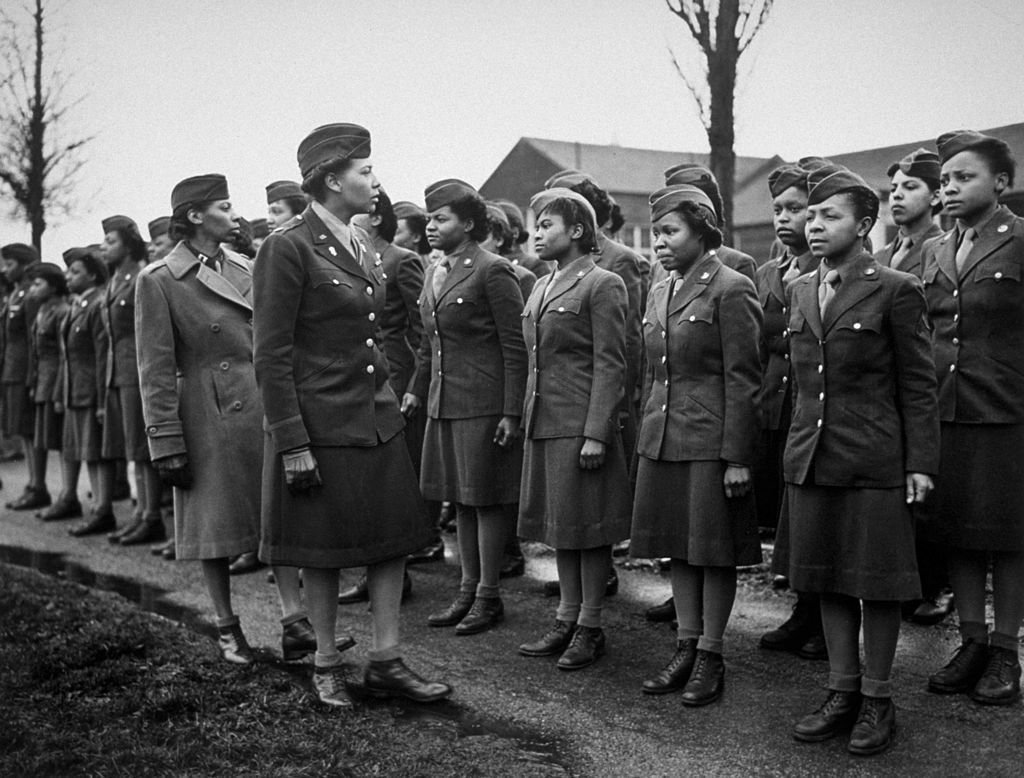
During World War II African American women struggled to find jobs in the defense industry, and when they did, white women were often unwilling to work beside them. Factory work allowed black women to escape domestic servant jobs during the period of the war, and they earn better wages; however, most were fired after the war and forced to resume work as maids and cooks.
The Battle of Midway
The Battle of Midway is often referred to as “the turning point of the Pacific”. It took place between the 4th to 7th of June, 1942. It was the Allies’ first major naval victory against the Japanese forces. Which was a rather surprising, as the Japanese Navy had more forces and experience than their American rivals.
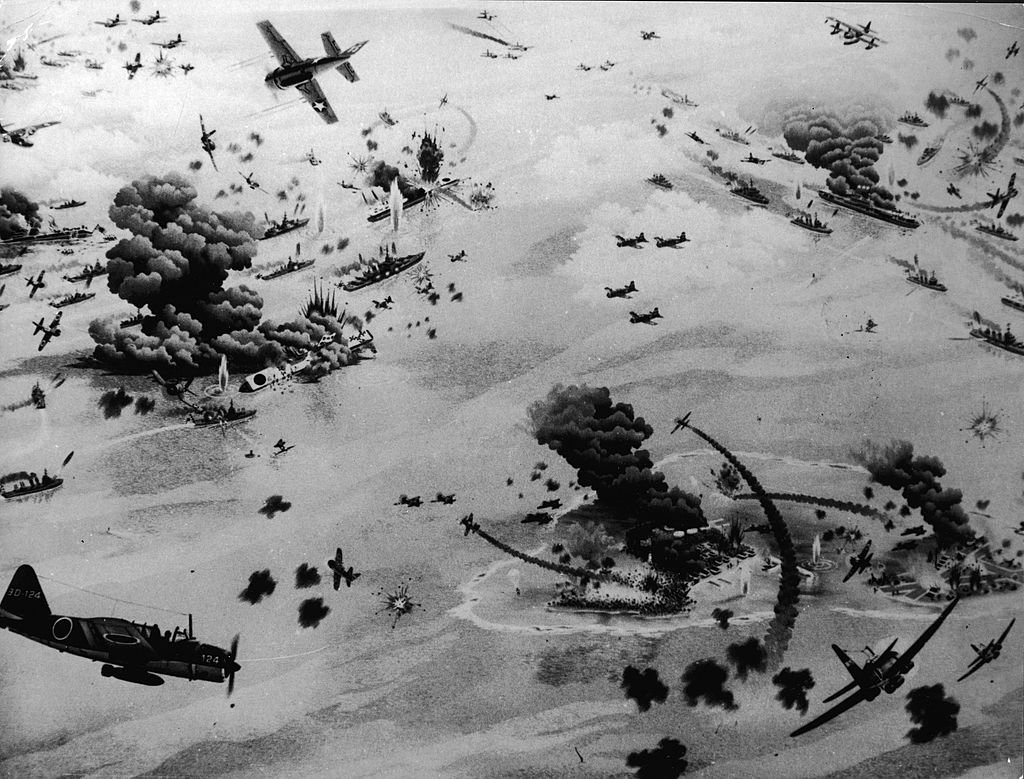
In the photo above is an artist’s impression of the infamous Battle of Midway. The renown military historian, John Keegan, referred to it “the most stunning and decisive blow in the history of naval warfare”.
The Famous Kiss
This is an outtake of the iconic photo taken by photojournalist, Alfred Eisenstaedt, was first published in Life magazine and is often called “V-J Day in Times Square,” or more famously as “The Kiss.” It was taken in New York City’s Times Square on August 14, 1945. Eisenstaedt was happened to photographing a spontaneous event that in Times Square right before the announcement of the end of the war with Japan was made by U.S. President Harry S. Truman early that morning.
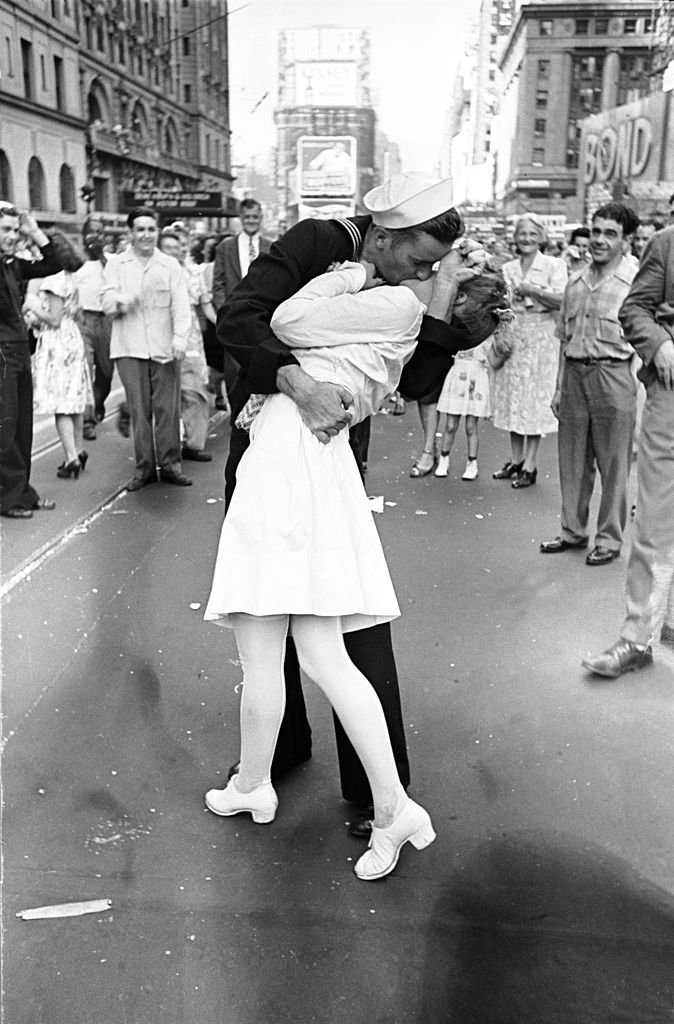
As pedestrians watched, an American sailor passionately kisses a white-uniformed nurse who was a stranger to him, to celebrate the long awaited-victory over Japan. The two were later identified as George Mendonsa and Greta Friedman. Many were shocked to hear that at the time Mendonsa’s new girlfriend, Rita Petry, was actually waiting for him in the crowd.
The Japanese Surrender
Early Sunday morning on September 2, 1945, aboard the new 45,000-ton battleship U.S.S. Missouri and before representatives of nine Allied nations, soldiers and sailors watched as the Japanese signed their surrender. General MacArthur stated at the ceremony that the Japanese and their conquerors did not meet “in a spirit of mistrust, malice or hatred but rather, it is for us, both victors and vanquished, to rise to that higher dignity which alone benefits the sacred purposes we are about to serve.”
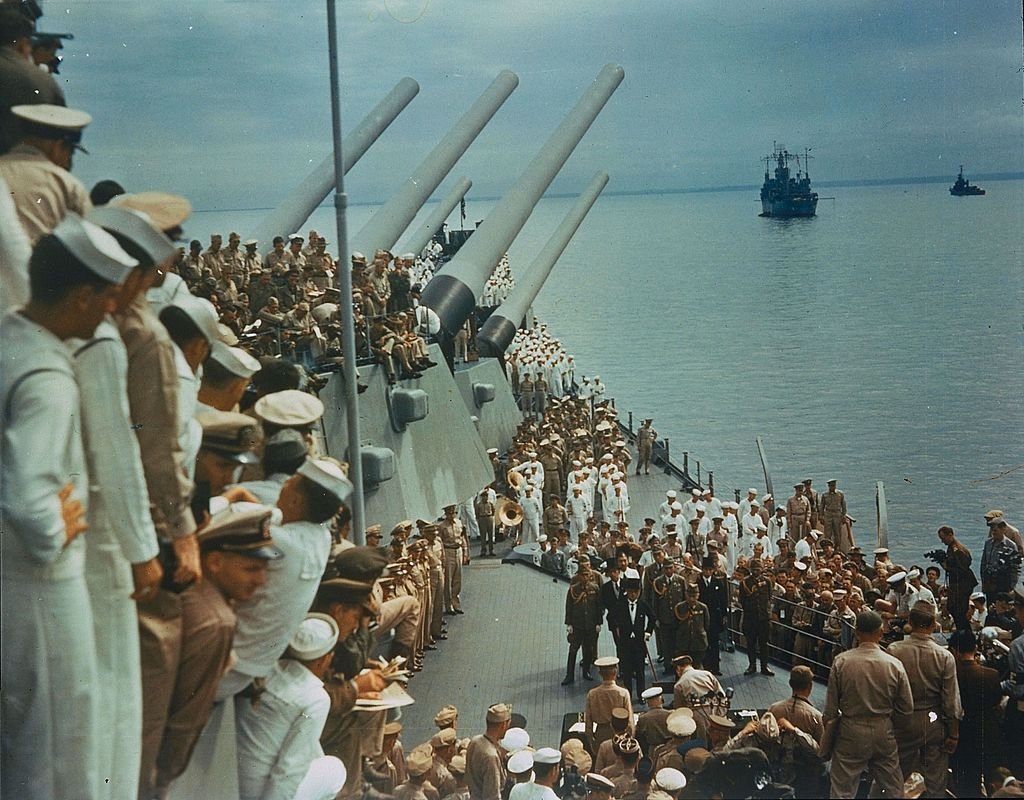
None of the Japanese delegates were saluted by any of the high-ranking officers, and later, Gen. Carl A. Spaatz revealed that U.S. planes were set and ready with bombs to halt any last-minute gorilla attack by the Japanese, as a deckful of high-ranking Allied officers on the U.S.S. Missouri might have presented a tempting target for a final suicide attack.
German Children in Line for Gruel Rations
During the first two years of the ten-year the Allies occupied Western Germany following World War II, the American food policy was enacted- fearing Nazi resurgence, U.S. occupation forces were given strict orders not to share their food with the German population. Even German maids weren’t allowed to be caught with of any leftovers; “the food was to be destroyed or made inedible”. Former U.S. president, Herbert Hoover, reported that in the fall of 1946, starvation increased mortality among Germans over 70 by 40% .
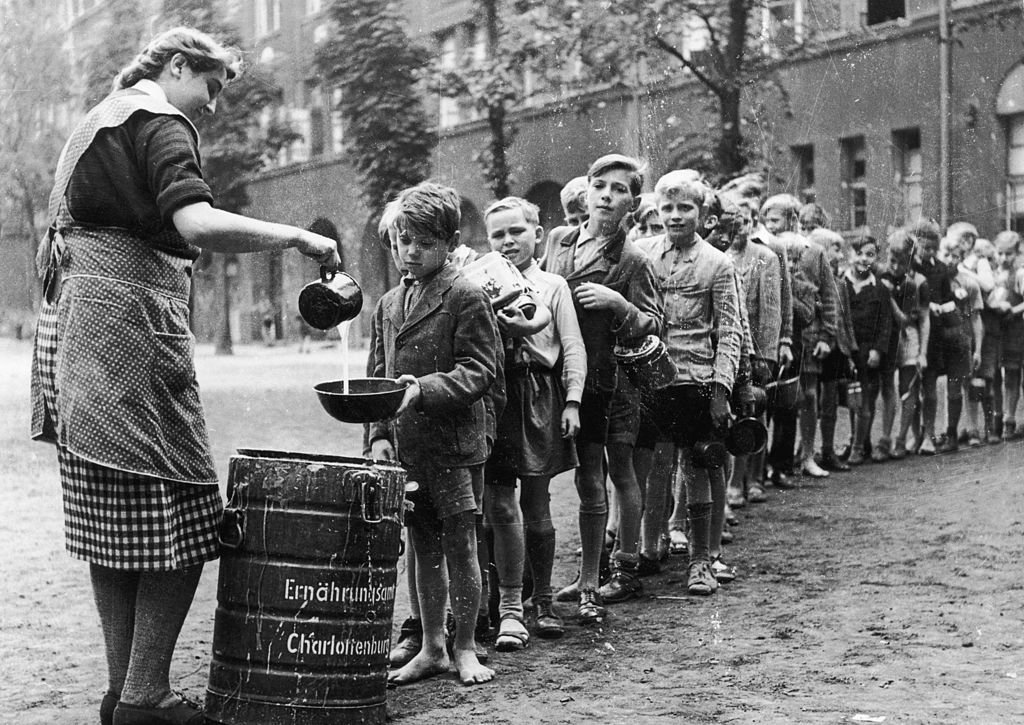
The German food situation worsened during the brutally cold winter months of 1946–47. The average German calorie intake ranged from 1,000 to 1,500 calories per day, while the severe lack of fuel for heating only made matters worse. For comparison, the average adult calorie intake in the U.S was 3,200–3,300 ( in the U.S. Army 4,000), and in the UK 2,900. By early 1946, U.S. President, Harry S. Truman, allowed foreign relief aid to enter Germany in order to review the food situation, and in mid-1946 they were permitted to give starving German children food. In the photo above you can see schoolboys in postwar Berlin in line for a ration of gruel (flour and milk) in the playground. The rations were provided by the British authorities.

Finding The Right Dog For Your Family

Dogs Health 101

Actresses That Underwent Shocking Transformations For Movie Roles

The Hunger Games Memes & Gems Only Real Fans Get
Iconic Movie Lines That Were Completely Improvised

Top Luxury Cars Your Favorite Stars Love to Drive
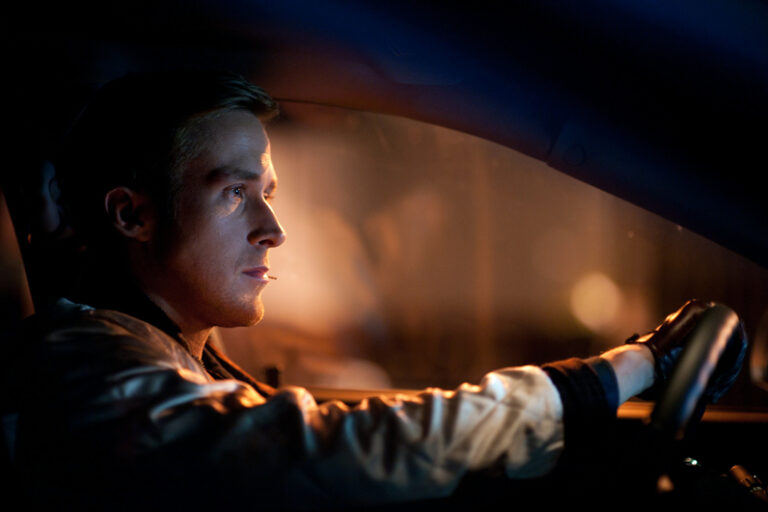
Decoding the Most Baffling Movie Endings in Cinema History

Secrets About Air Force One and the World’s Most Expensive Presidential Aircraft
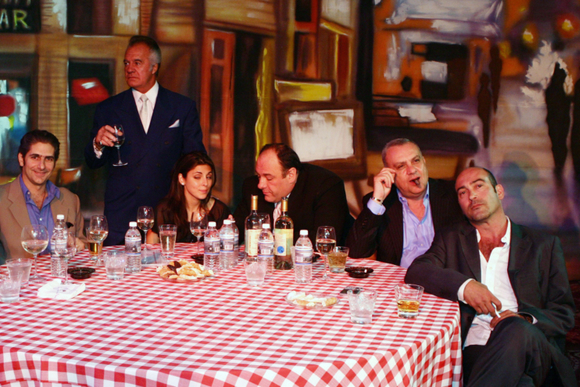
‘The Sopranos’ Showrunner Finally Explains His Cryptic Ending

More Ways to Add Technological Flair to Your Kitchen With These New Devices
